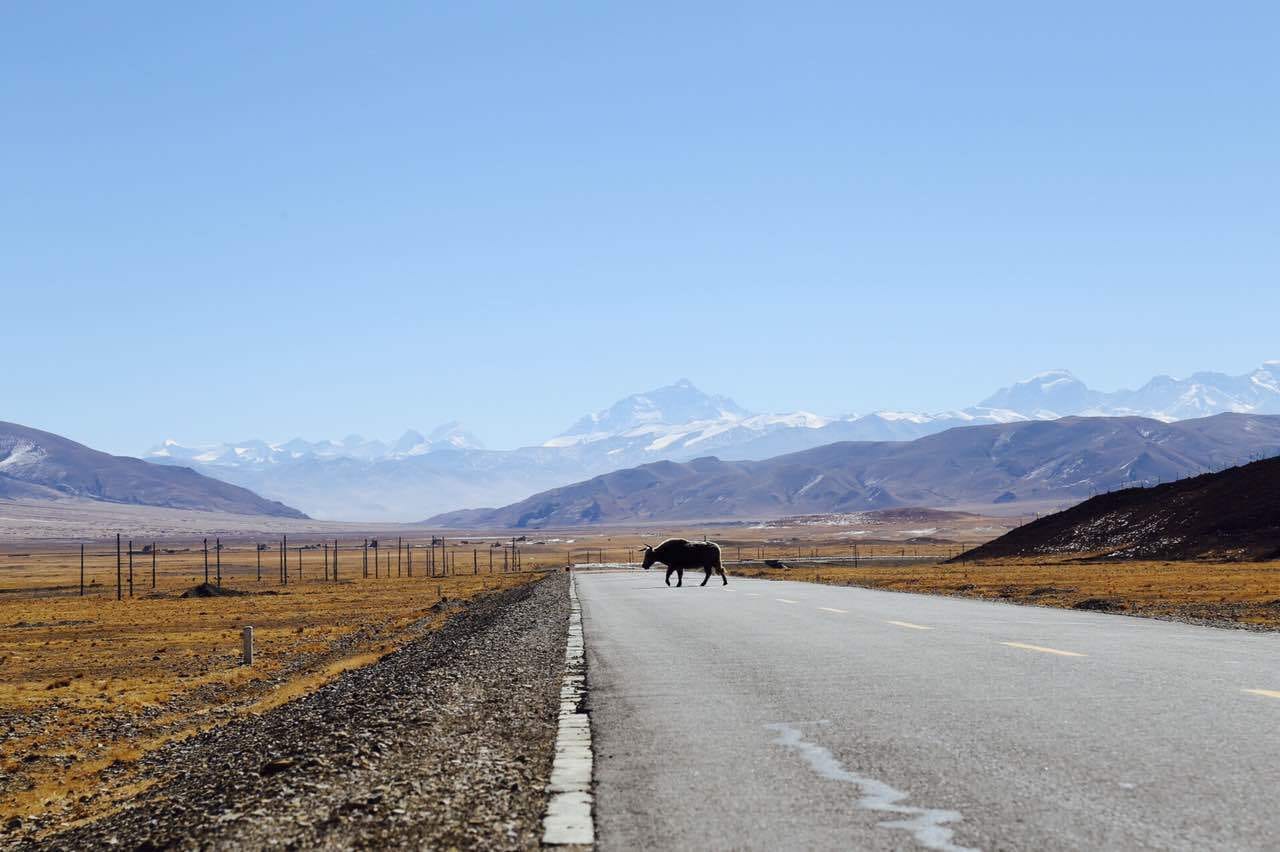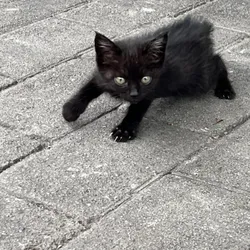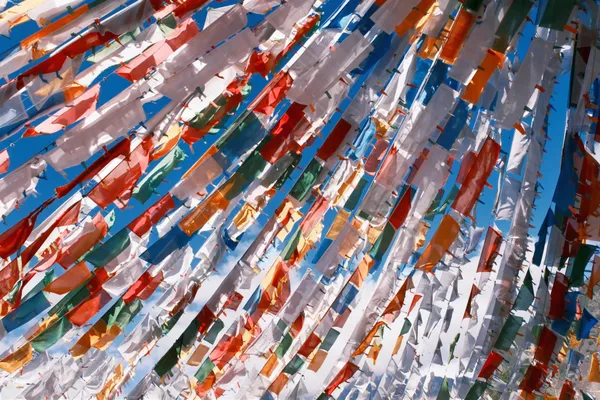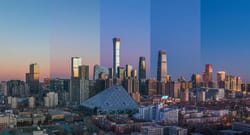On this page
Everyone has a travel dream, and for many, that dream includes a stop in Tibet. I want to taste barley wine and butter tea, hear the monks engage in their serious debates, walk the sacred pilgrimage routes, and gaze at the azure sky dotted with clouds. So, I say to myself, I must visit Tibet at least once!
A 10-Day Itinerary for Tibet: All Must-See Attractions Covered!

Based on popular choices and my personal experience living and traveling in Tibet, I've put together a classic 10-day itinerary that covers all the must-see spots for first-time visitors. This includes a one-day tour of Lhasa, a four-day eastern route (Lhasa-Linzhi-Lulang-Gacha-Zedang-Lhasa), a four-day western route (Lhasa-Shigatse-Everest Base Camp-Lhasa), and a one-day trip to Namtso Lake in the northern route.
One-Day City Tour: Potala Palace, Barkhor Street, and Jokhang Temple, followed by an evening show of "Princess Wencheng"
Upon arriving in Lhasa and checking into your hotel or guesthouse, resist the urge to rush into activities. You need to acclimate to the high-altitude environment at 3,700 meters. Many might not feel unwell immediately after disembarking from the plane or train because your body still has some oxygen reserves. However, after a few hours, altitude sickness may set in. Therefore, it’s crucial to rest on the first day. This is not a waste of time, as good health is essential for enjoying the rest of your trip. You can take a nap at the hotel or relax on the guesthouse rooftop.
After acclimating, you can begin exploring. Essential sites in Lhasa include Potala Palace and Jokhang Temple, which are about 600 meters apart and can be visited together.
- Potala Palace
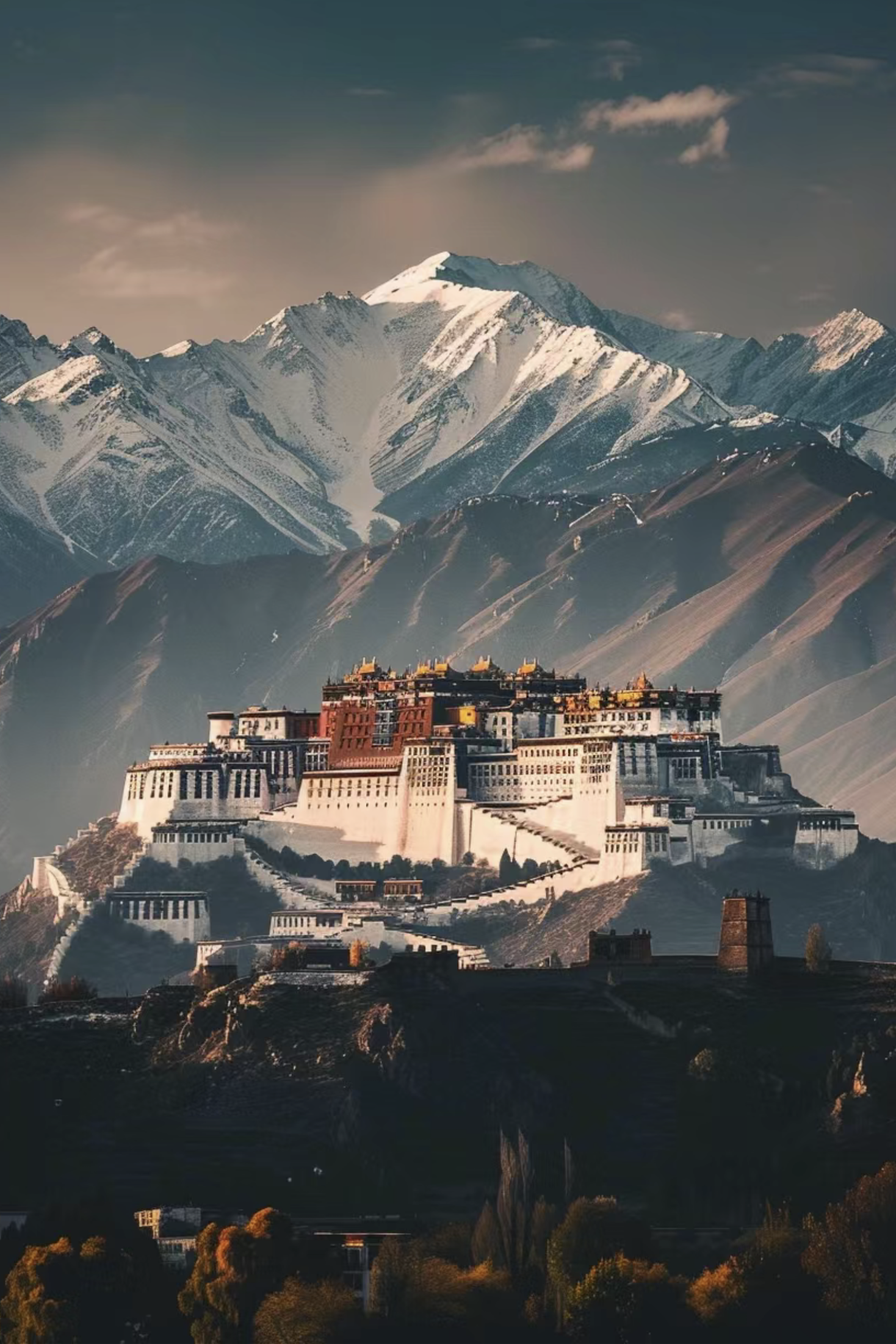
Considered the "Putuo" in Tibetan Buddhism, Potala Palace is also known as “Zanmu Linjianji” in Tibetan, meaning it is as valuable as half the world. The palace is primarily divided into the central Red Palace and the White Palaces on either side, along with the Snow City and the Zhongqiao Lu Kong Park. Seeing this palace in person is even more breathtaking than seeing it on TV or in magazines. The night view is equally captivating, illuminated beautifully. Highlights include the stupas of past Dalai Lamas inside the Red Palace, where you’ll see gold and jewels that are truly dazzling.
Admission:
- During peak season (May 1 to October 31), the ticket price is 200 RMB per person, and reservations are required. In the off-season (November 1 to April 30), the ticket price is 100 RMB per person, and reservations are not needed.
- During peak season, you can make reservations either on-site or online. For on-site reservations, you need to get a queue number at the ticket window, make a reservation the next day with that number, and then visit on the following day. Online tickets can be purchased for a time slot between 1:00 PM and 4:00 PM within 7 days.
- For a simpler option, you can buy a half-day tour or a full-day tour of Potala Palace and Jokhang Temple, which includes a guide and does not require advance ticket reservations.
💡 Tips
- The initial 200+ steps can be challenging. Move slowly, take breaks, and don’t get too excited to avoid altitude sickness.
- The tour route inside Potala Palace is fixed and must follow the signs.
- Avoid wearing shorts or skirts. The interior is quite cool, so a jacket is recommended.
- There is a water dispenser in the Deyang Hall where you can fill your cup with hot water for free.
- The last public restroom before entering Potala Palace is located on the right side of the White Palace Square. There are no restrooms along the tour route for the next two hours.
- Barkhor Street
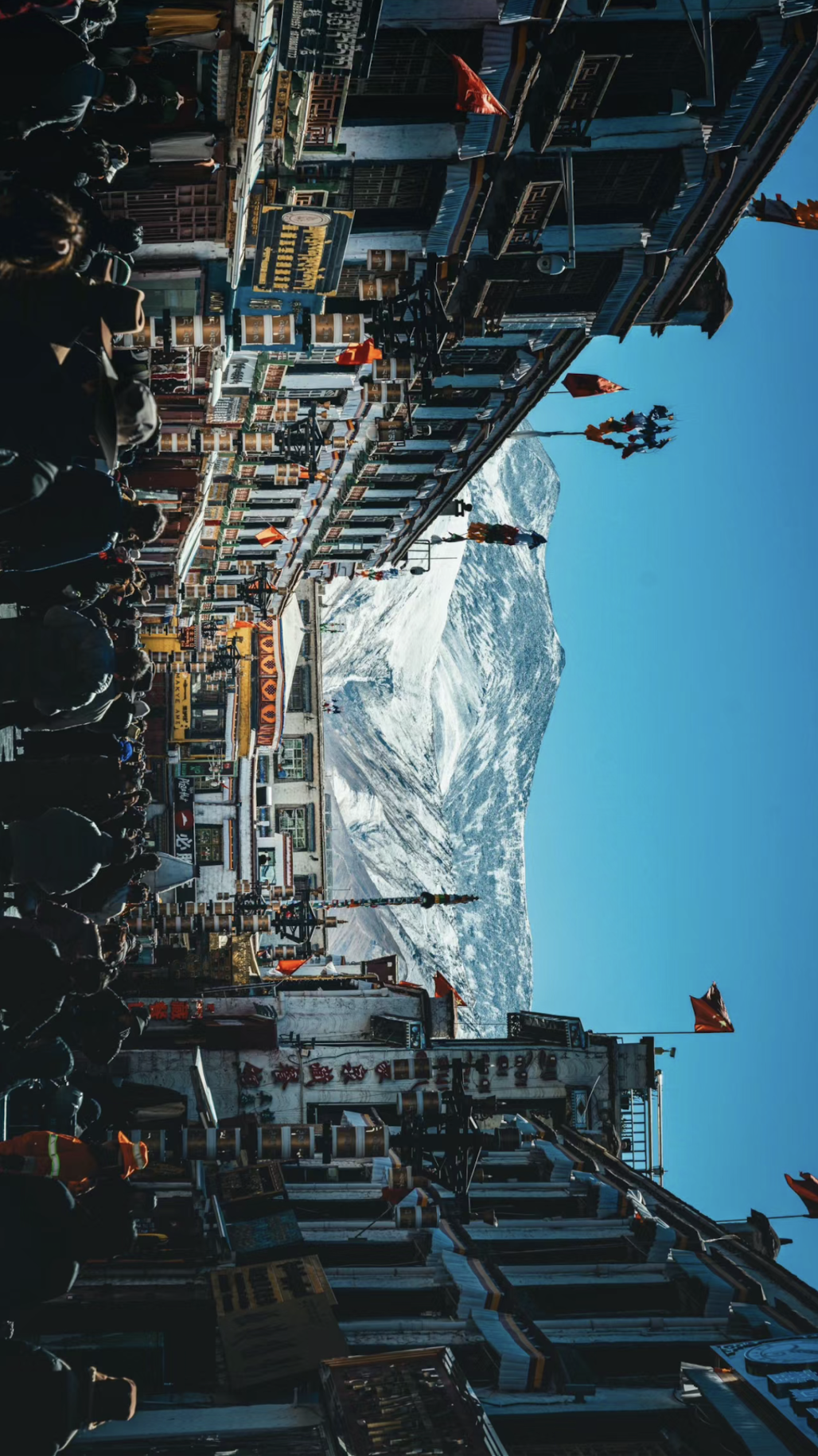
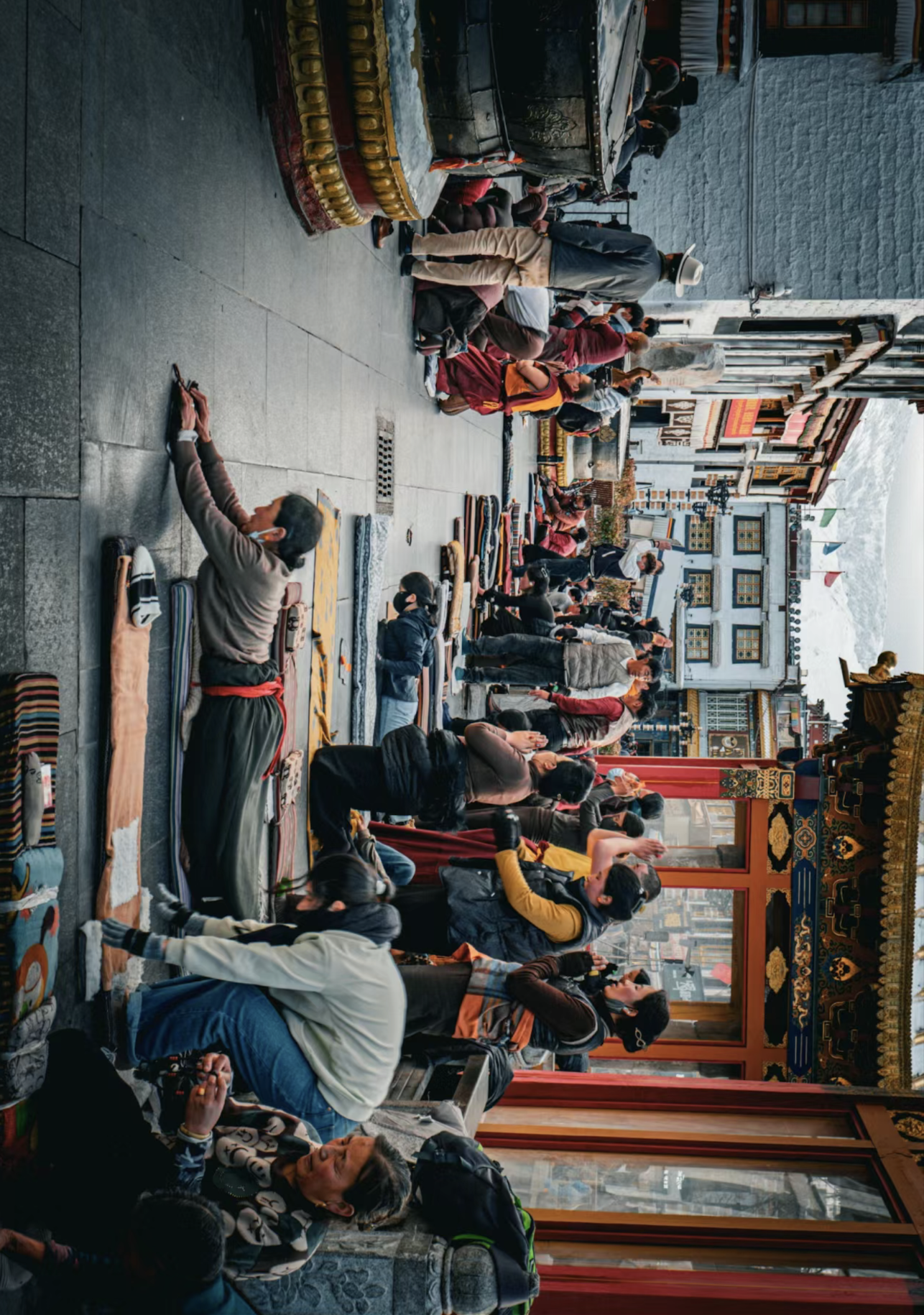
Barkhor Street is a well-known pilgrimage route and shopping street in Lhasa. You’ll see many local Tibetans doing their kora (circumambulation) and various Tibetan shops selling traditional clothing, crafts, and items from India and Nepal. There are also many popular Tibetan restaurants nearby.
- Jokhang Temple
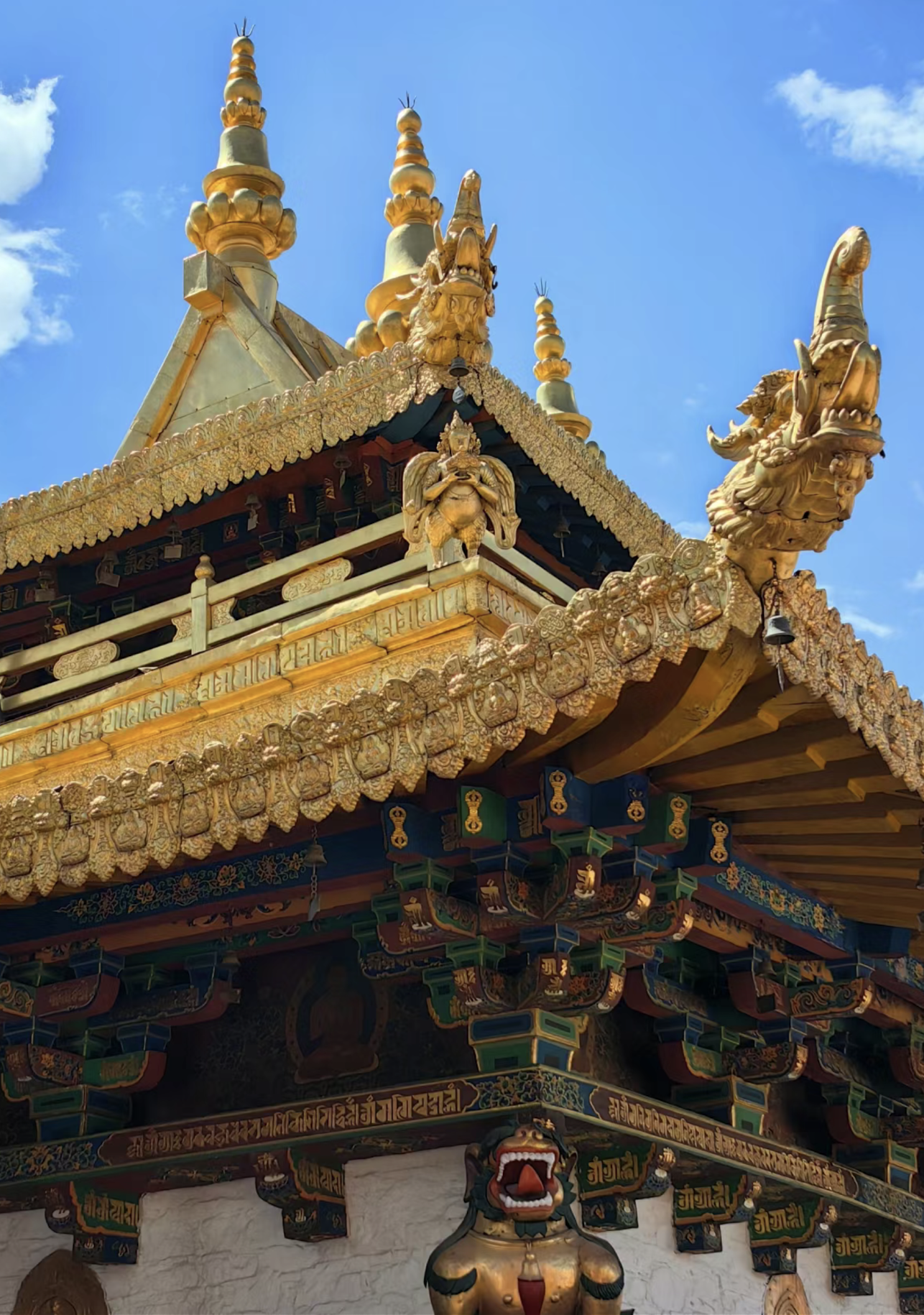
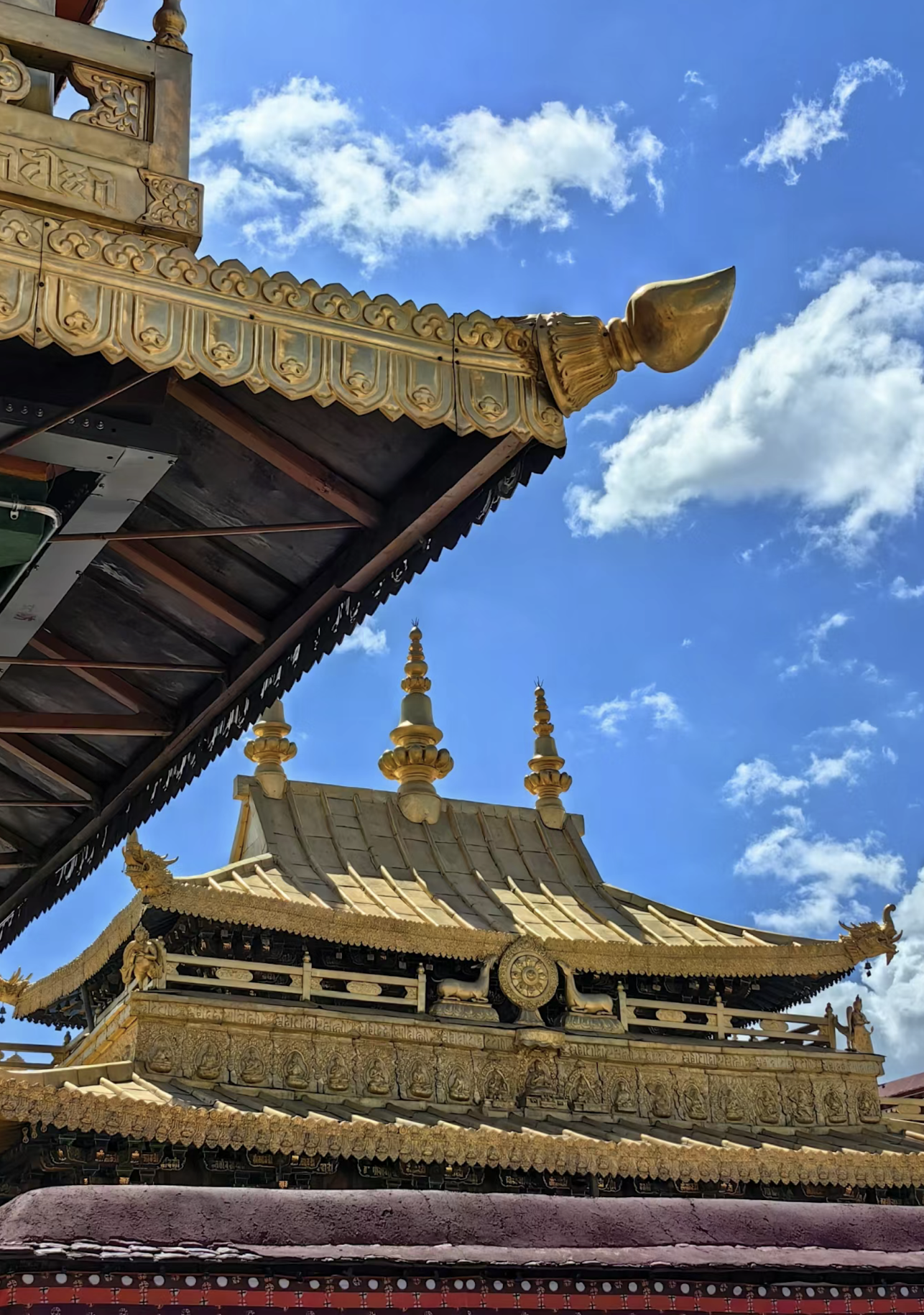
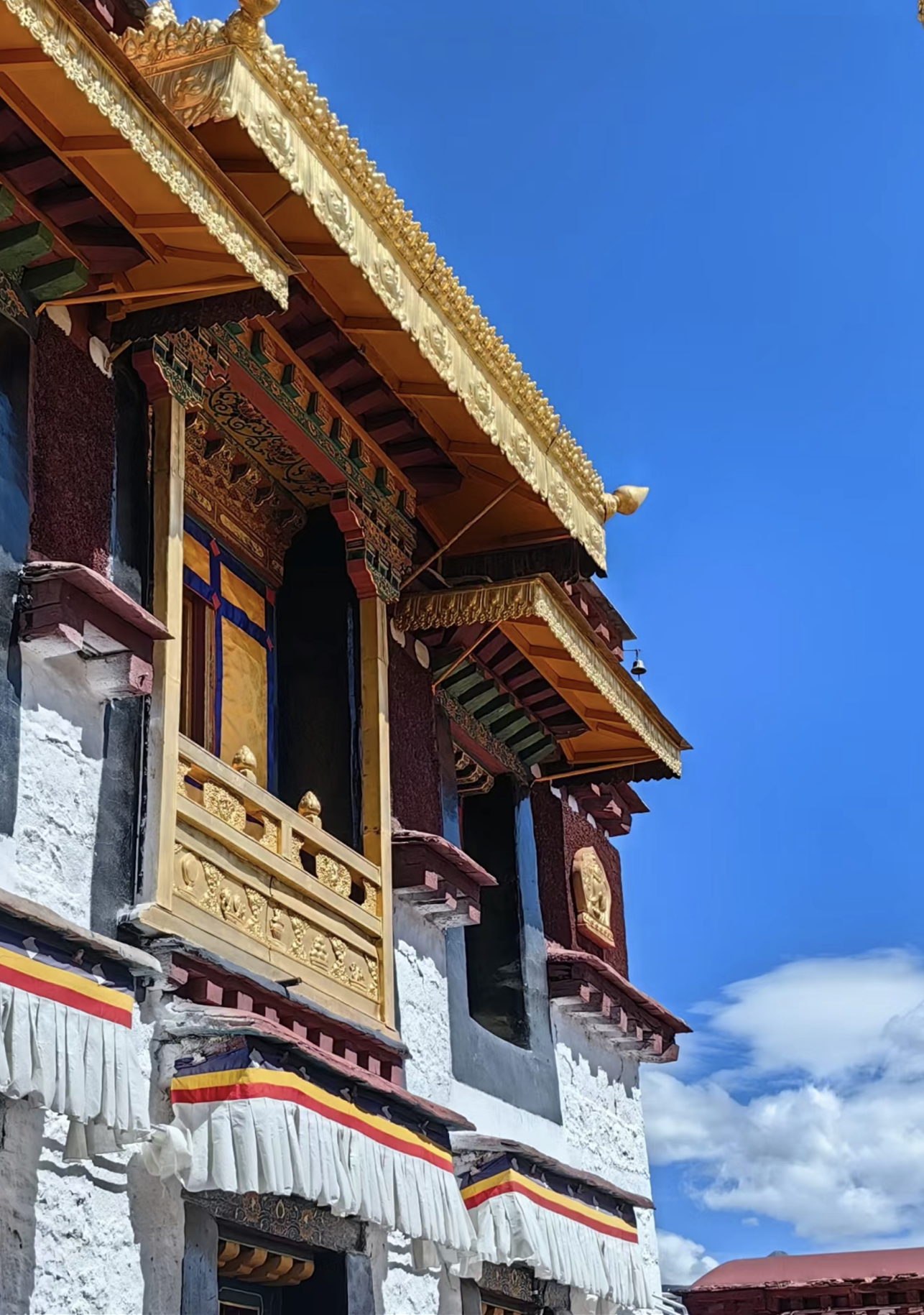
At the heart of Barkhor Street is Jokhang Temple. The temple’s original name "Rasa" evolved into "Lhasa," which became the name of the city. Hence, it is often said, “First came Jokhang Temple, then came Lhasa.” The temple's main attraction is the 12-year-old Shakyamuni Buddha statue brought by Princess Wencheng, which contributes to Lhasa being known as a "sacred land." The third-floor platform offers a great view of Potala Palace and Jokhang Temple Square. Another notable sight is the Tibetan pilgrims prostrating in front of the temple, a moving display of faith.
Admission: The ticket price is 85 RMB per person year-round, regardless of the season. (It’s advisable to keep your ticket as it remains valid for future visits within a few days.) Photography is not allowed inside the main hall. Audio guides are available for 50 RMB per session.
Tibetan Cuisine: For dinner, try local Tibetan restaurants near Jokhang Temple such as Snowland Restaurant, Maji Ami, Sun Tribe, or Guangming Port Qiong Sweet Tea House. Enjoy Tibetan butter tea, sweet tea, and traditional Tibetan dishes like fried lamb chops, beef tsampa porridge, yogurt cake, Tibetan pancakes, and hand-pulled lamb/yak meat. The taste may vary as some restaurants have adapted their recipes, but the food remains enjoyable. Expect to spend around 80 RMB per person. Eat moderately to avoid overloading your digestive system in the high altitude.
Evening Entertainment: Head to the China Tibet Cultural Tourism Creative Park to watch the 9:00 PM performance of "Princess Wencheng." It is a grand Tibetan cultural performance featuring spectacular group dances and traditional songs, set against a backdrop of starry skies and mountainous landscapes. The show, divided into five acts and lasting approximately 90 minutes, showcases various Tibetan celebratory dances and traditional performances.
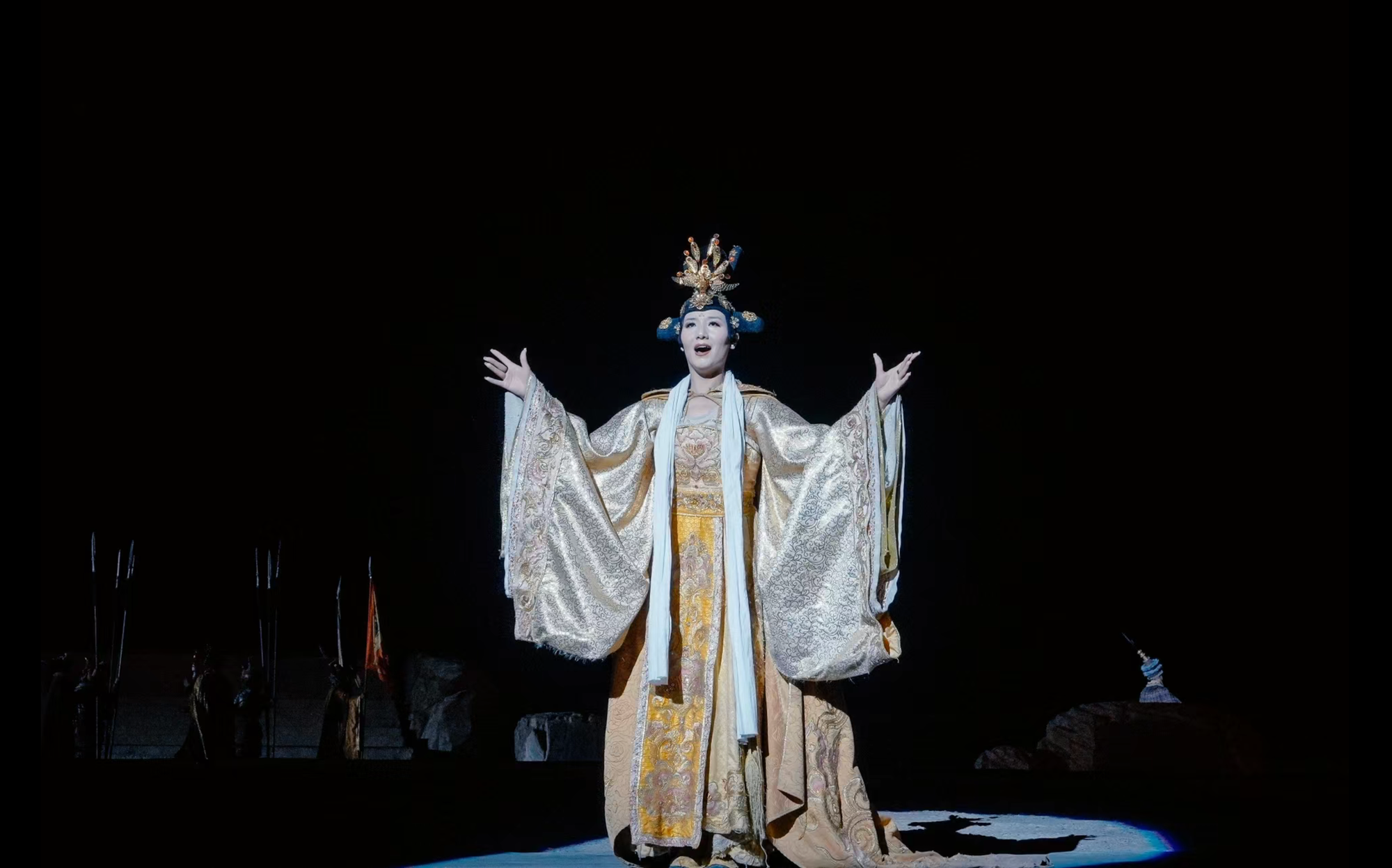
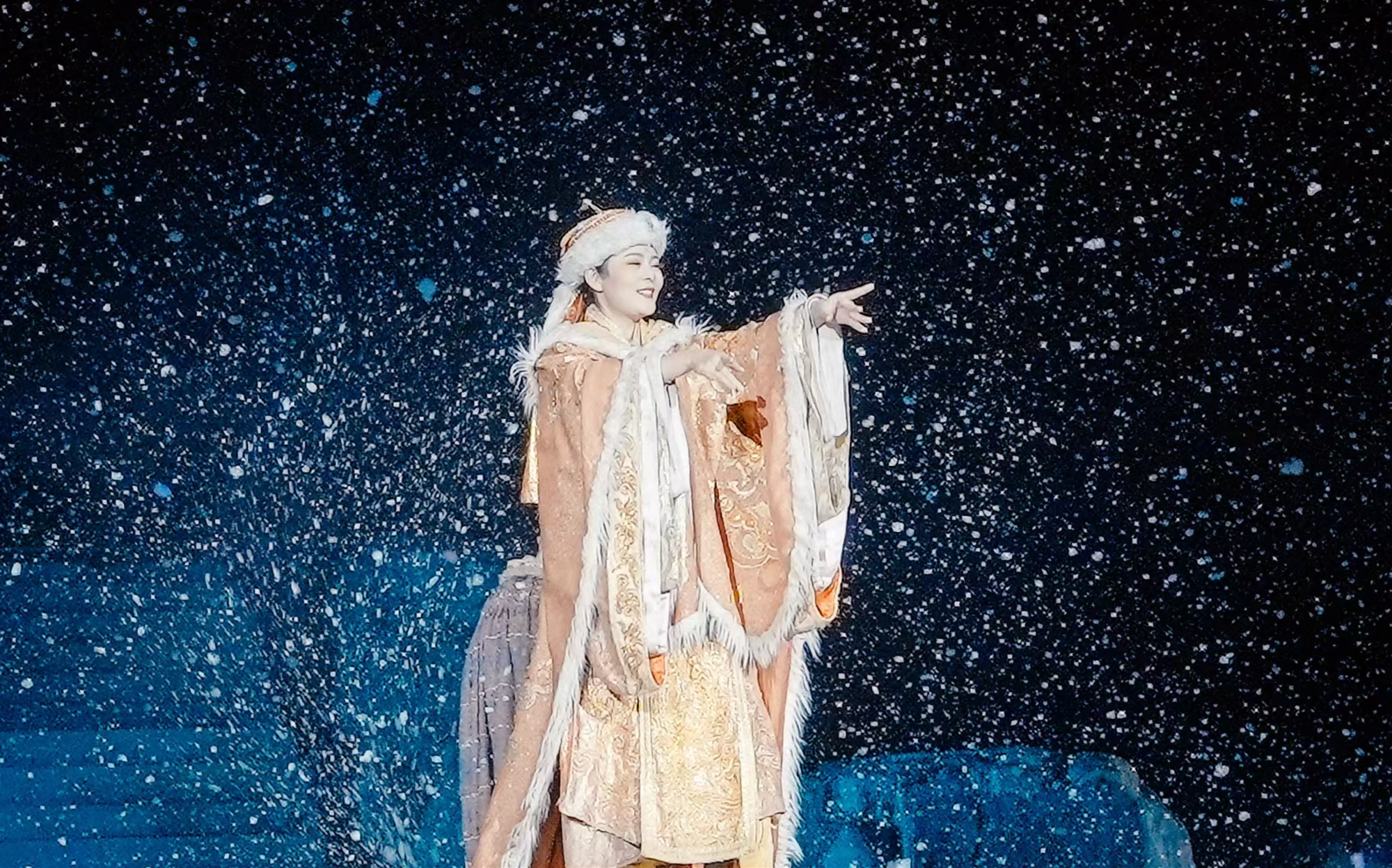
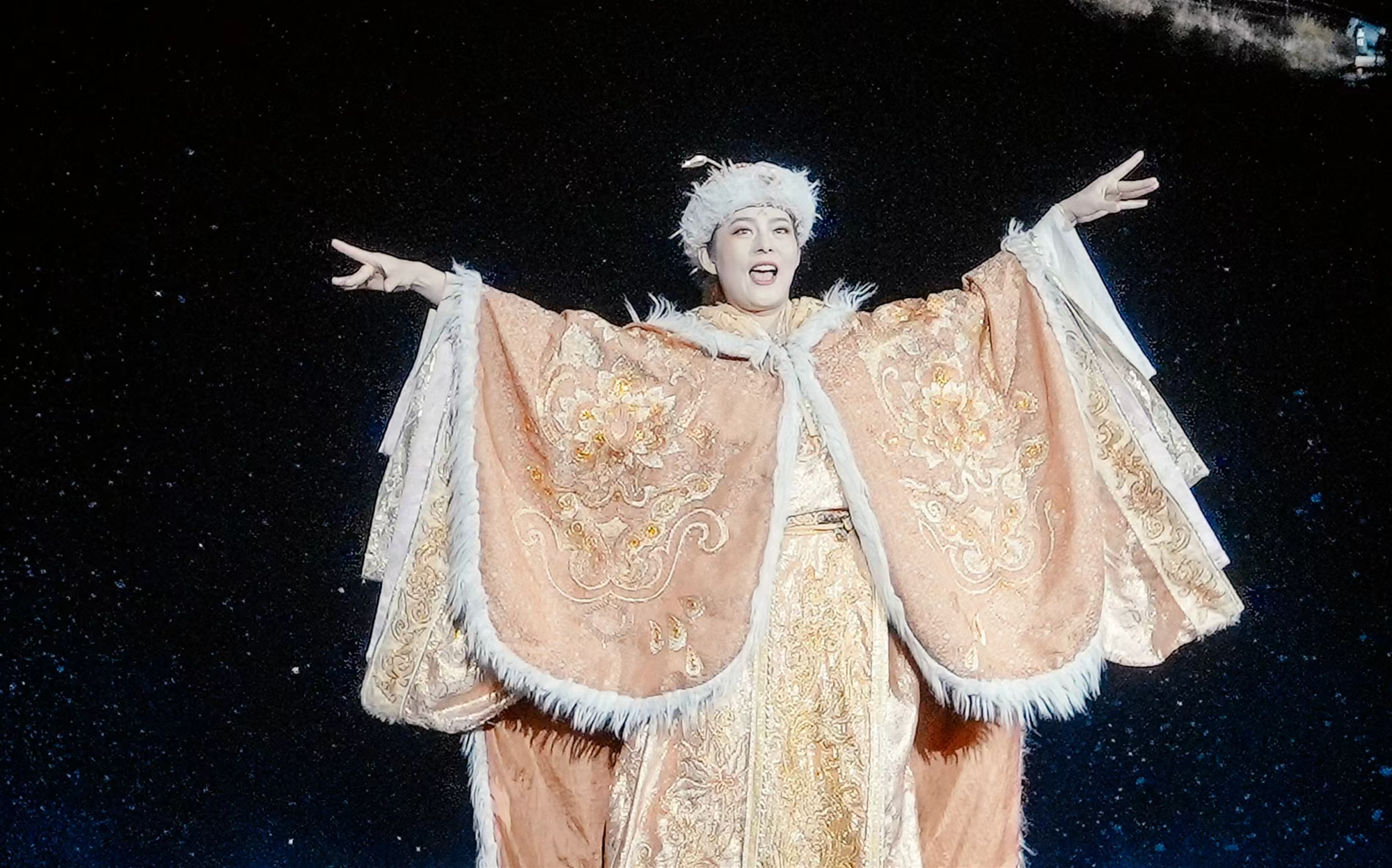
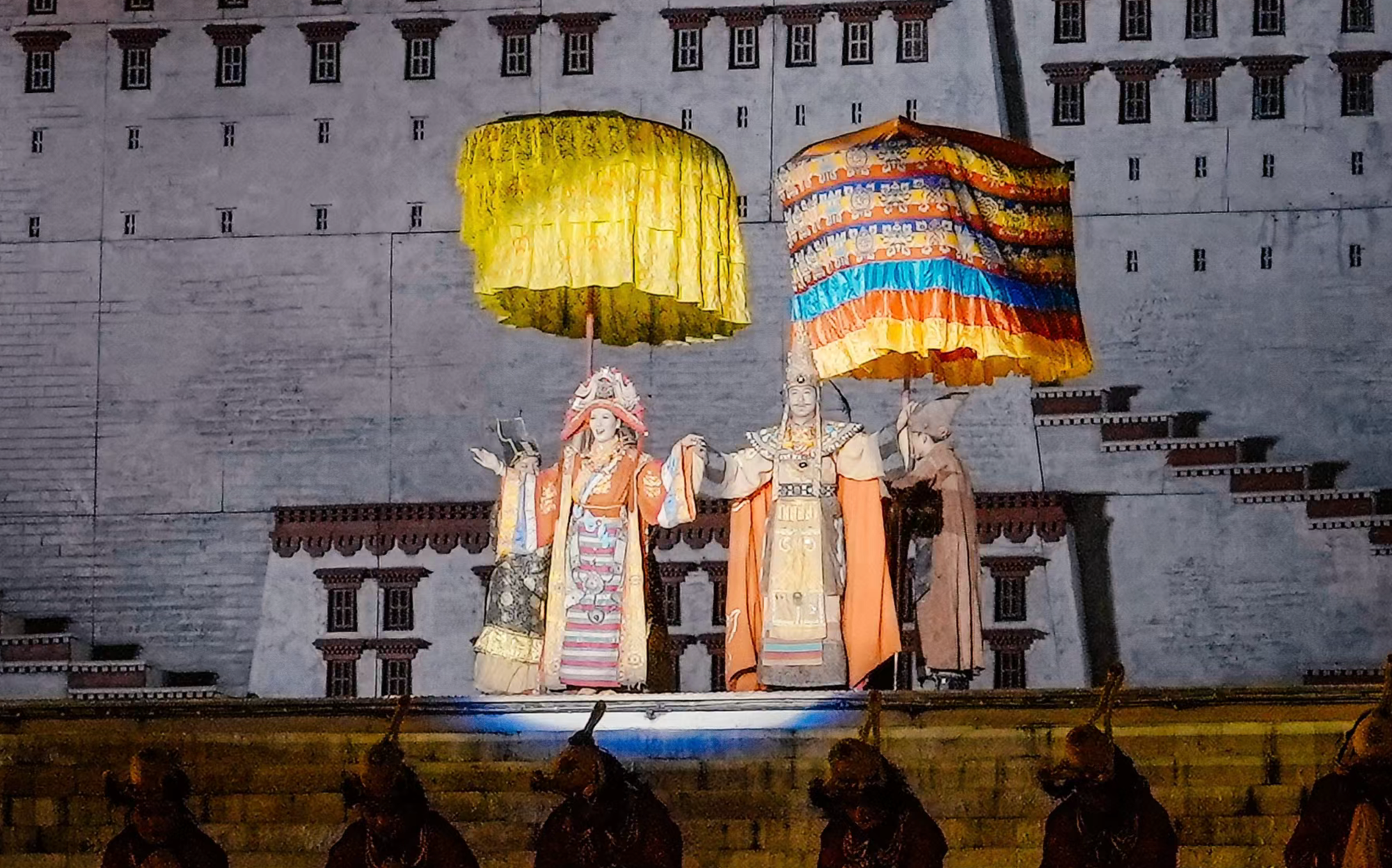
Princess Wencheng
Transportation: From Jokhang Temple, take Bus 11 or 17 and get off at the Post Bus Station after three stops. From there, it’s about a 3-kilometer walk. It’s recommended to take a taxi instead, costing 30-50 RMB. Be sure to negotiate the fare with the driver in advance, as taxis usually do not use meters for this route.
4-Day Eastern Tibet Tour: Lhasa - Nyingchi - Rulang - Gacha - Zedang - Lhasa
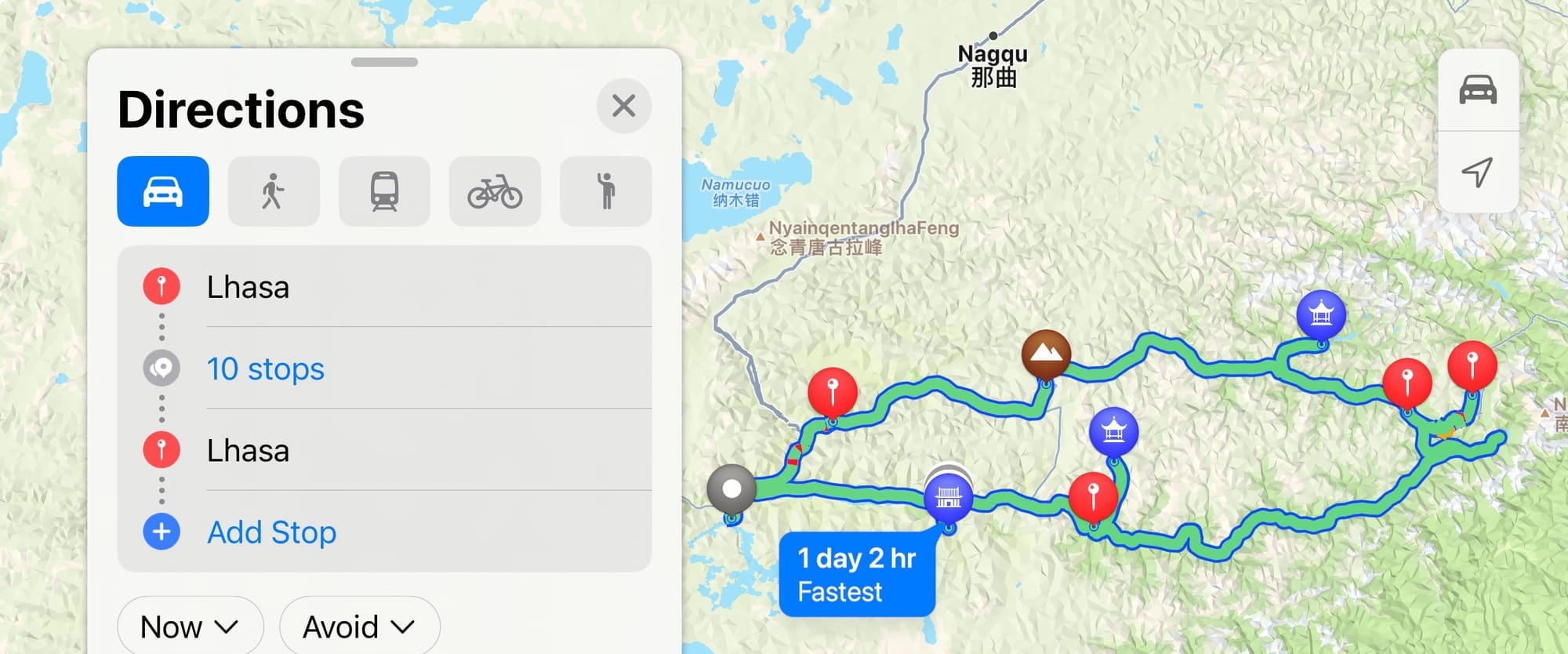
Itinerary:
Day 1: Lhasa — Mi La Pass — Basong Cuo — Nyingchi
Day 2: Nyingchi — Rulang — Yarlung Tsangpo Grand Canyon — Gacha (Shannan Region)
Day 3: Gacha — Lamaling Lake — Yumbulagang — Zedang
Day 4: Zedang — Yamdrok Lake — Lhasa
E-Day 1: Lhasa — Mi La Pass — Basong Cuo — Nyingchi
The eastern route is chosen first because Nyingchi is at a lower altitude and has more oxygen, making it easier for newcomers to adapt. Nyingchi City (note: as of 2015, Nyingchi has been designated as a city) is 410 kilometers from Lhasa, with nearly 200 kilometers of highway and the rest on national roads. The journey takes about 8 hours, passing through Mi La Pass, the highest point on the Sichuan-Tibet Highway, and the sacred Red Sect lake, Basong Cuo. These two attractions are visited en route to Nyingchi.
- Mi La Pass
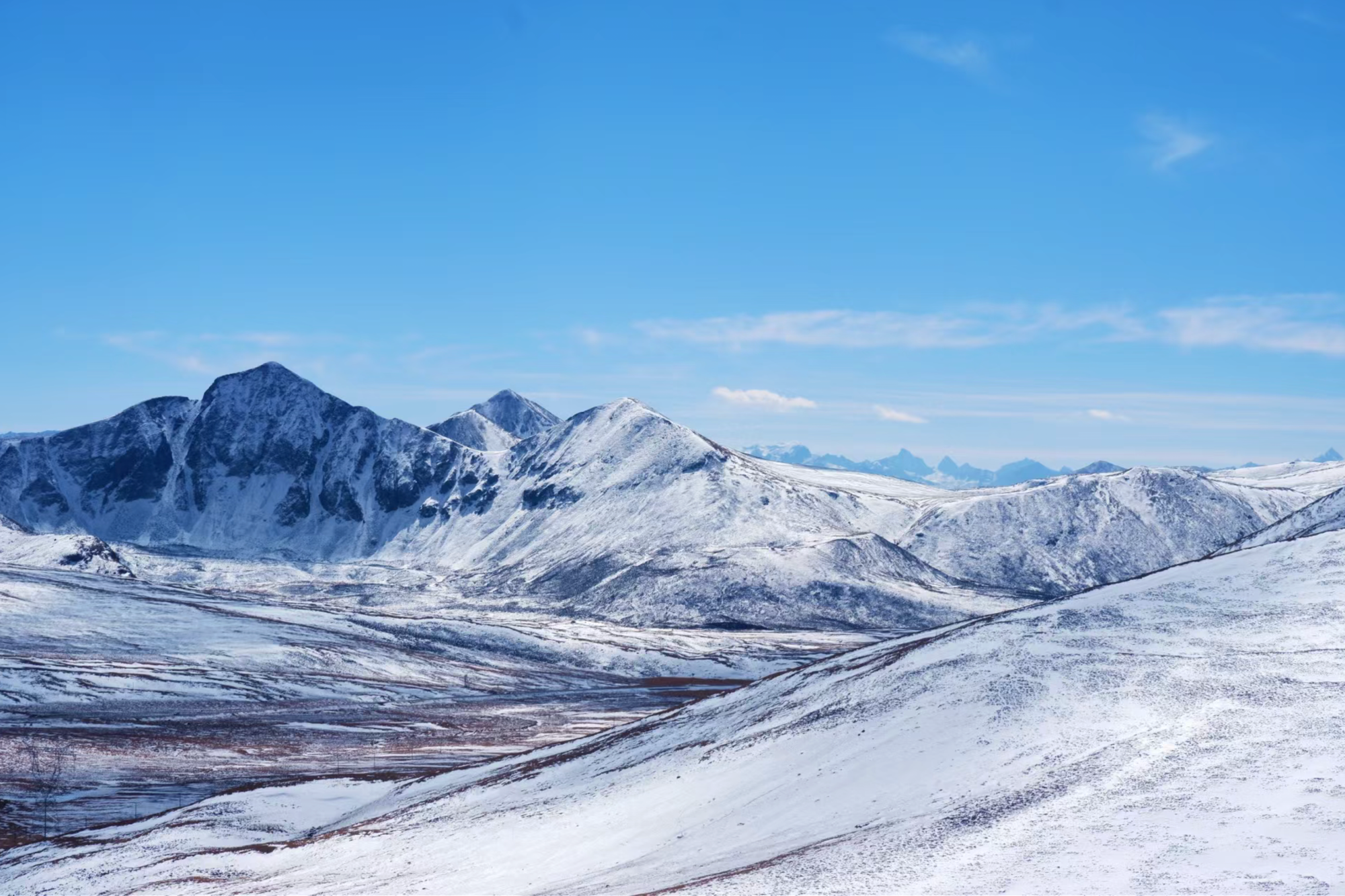
Located on the 318 National Road of the Sichuan-Tibet Line, Mi La Pass sits at an elevation of 5,013 meters, with snow year-round. This pass is a resting spot on the Lhasa to Nyingchi travel route, where local people often offer prayer flags for blessings. The combination of blue skies, white clouds, and colorful prayer flags creates a sacred and pure atmosphere. Travelers cycling or driving the Sichuan-Tibet route often stop at the Mi La Pass monument for photos, as it is the last and highest mountain pass on this route.
💡 Tips:
- Avoid running or jumping here to prevent altitude sickness.
- It is recommended to join a shared vehicle or day tour for safety and time efficiency.
- There are three bronze yak statues at Mi La Pass; please do not climb on them for photos.
- Local Tibetans may sell prayer flags; politely decline if you’re not interested.
- Basong Cuo
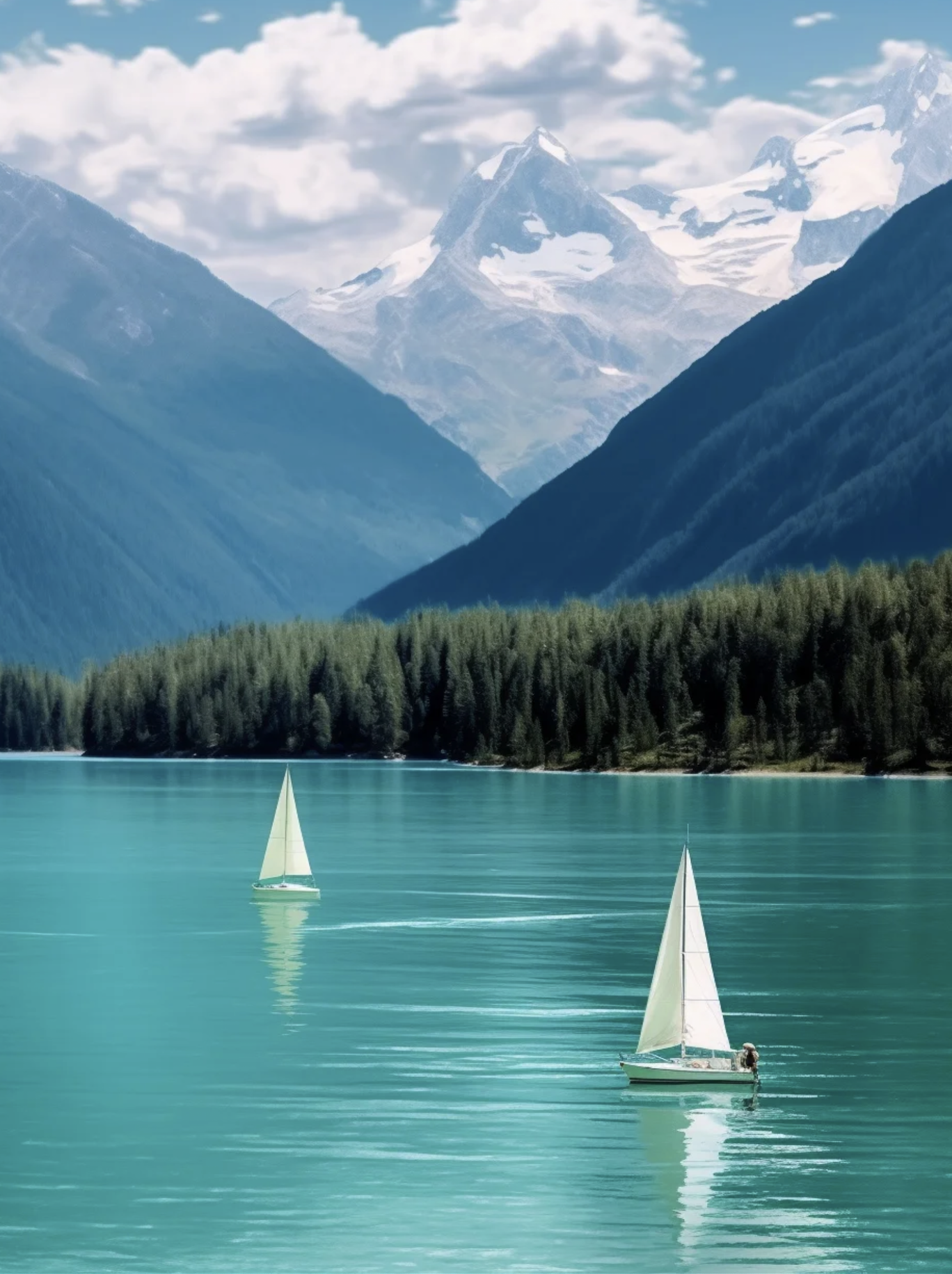
In Tibetan, Basong Cuo means "Green Water." Situated at an altitude of 3,469 meters, it is a renowned sacred lake of the Red Sect. The lake is not large but has crystal-clear water, resembling a piece of jade embedded in the lush mountains. There is a small island in the lake, where local boatmen offer ferry rides for visitors. On the island, you'll find the Cuozong Gongba Monastery, a well-known Red Sect temple in Tibet, with wooden carvings of male and female genitalia on either side of the entrance. Stroll around the island to enjoy the mountain views, explore the lake, and uncover the mysteries of Tibetan yin-yang temples!
Admission Fee: Peak season (May to October) 140 RMB (includes eco-bus within the scenic area)
Overnight Stay in Nyingchi City: For dinner, try the famous Rulang Stone Pot Chicken in Nyingchi. Wild matsutake mushrooms combined with local chicken make a delicious dish with a fragrant aroma that leaves a lasting impression. The main restaurant is located on Zhongshan Road in Nyingchi.
E-Day 2: Nyingchi — Rulang — Yarlung Tsangpo Grand Canyon — Gacha
Start early from Nyingchi to head east to Rulang, 70 kilometers away. On the way to Rulang, you will first pass the Sejila Pass, at an altitude of 4,900 meters. The winding mountain roads ascend steadily, while the altitude climbs sharply, giving way to the enchanting Rulang Forest and the morning mist, creating a fairy-tale atmosphere.
- Sejila Mountain and Namcha Barwa Peak
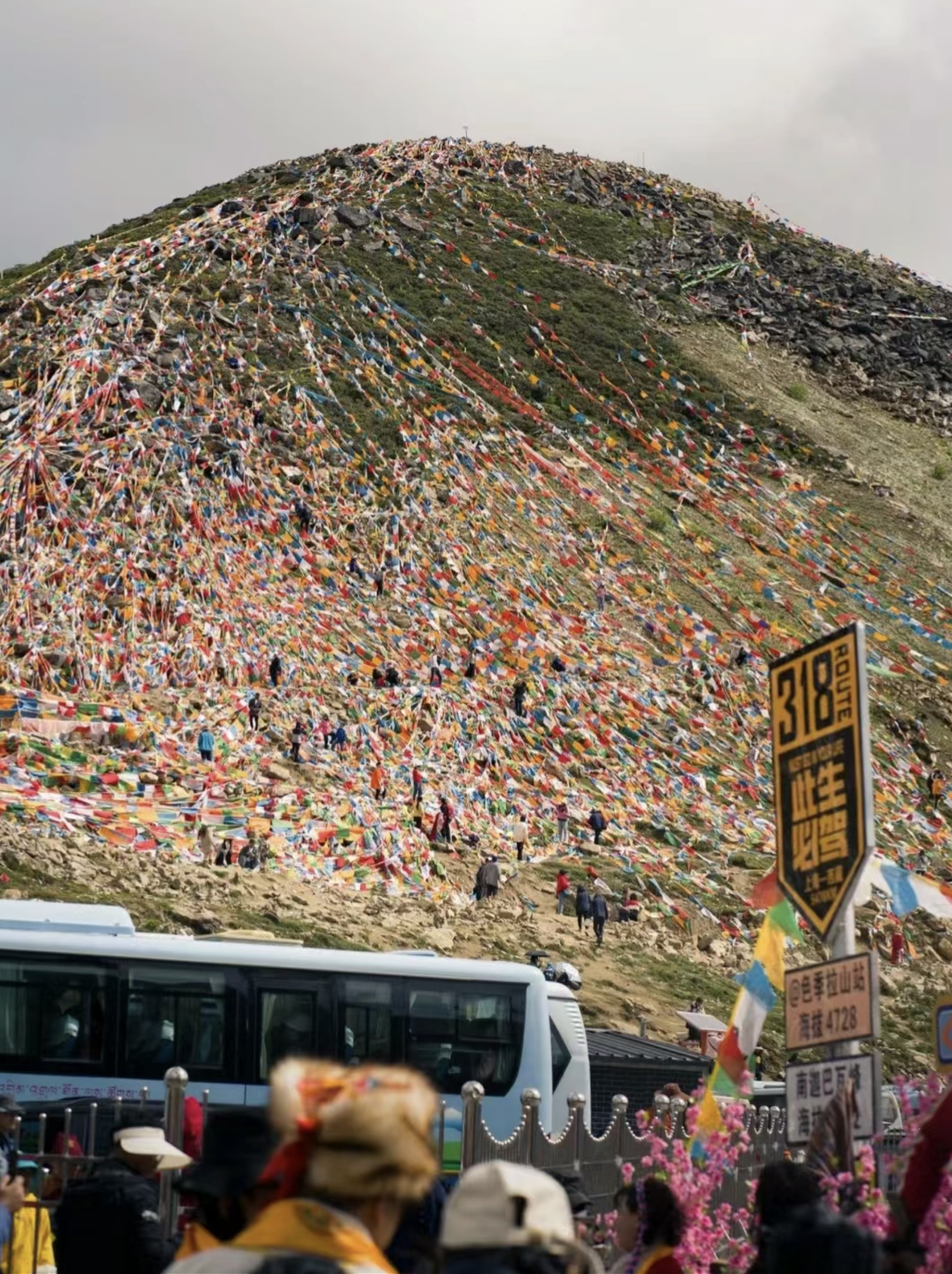
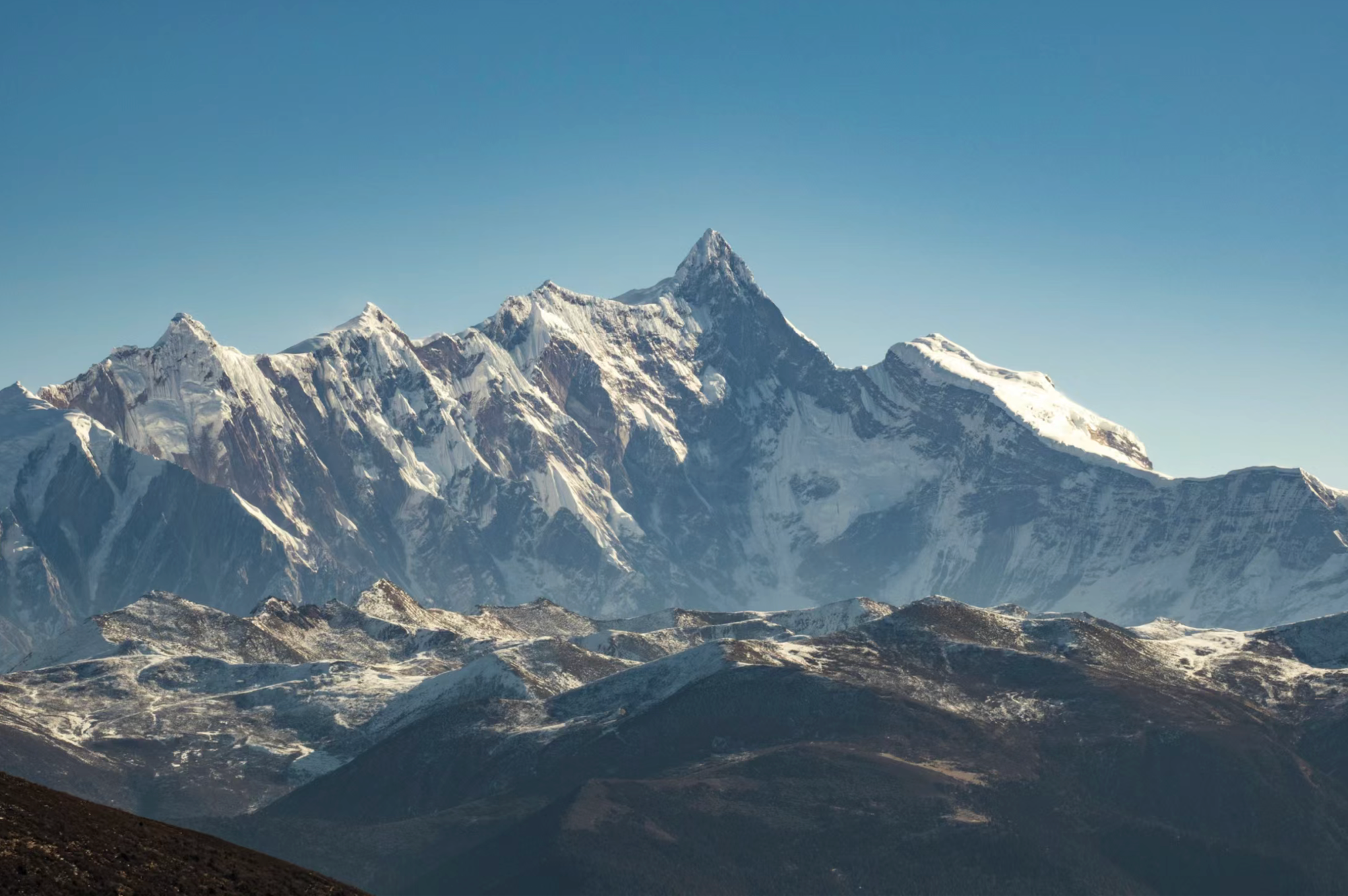
In Sejila Mountain National Forest Park, you can observe the typical vertical landscape, from snow-capped peaks to coniferous forests and then to broad-leaved forests, creating a complete view. It’s also the best vantage point to view Namcha Barwa Peak, which is the highest peak at the eastern end of the Himalayas (15th highest in the world, at 7,782 meters). Due to the rich moisture in the Yarlung Tsangpo Grand Canyon, Namcha Barwa Peak is visible for less than 100 days a year. If you're lucky enough to see it, you're in for a treat!
- Rulang
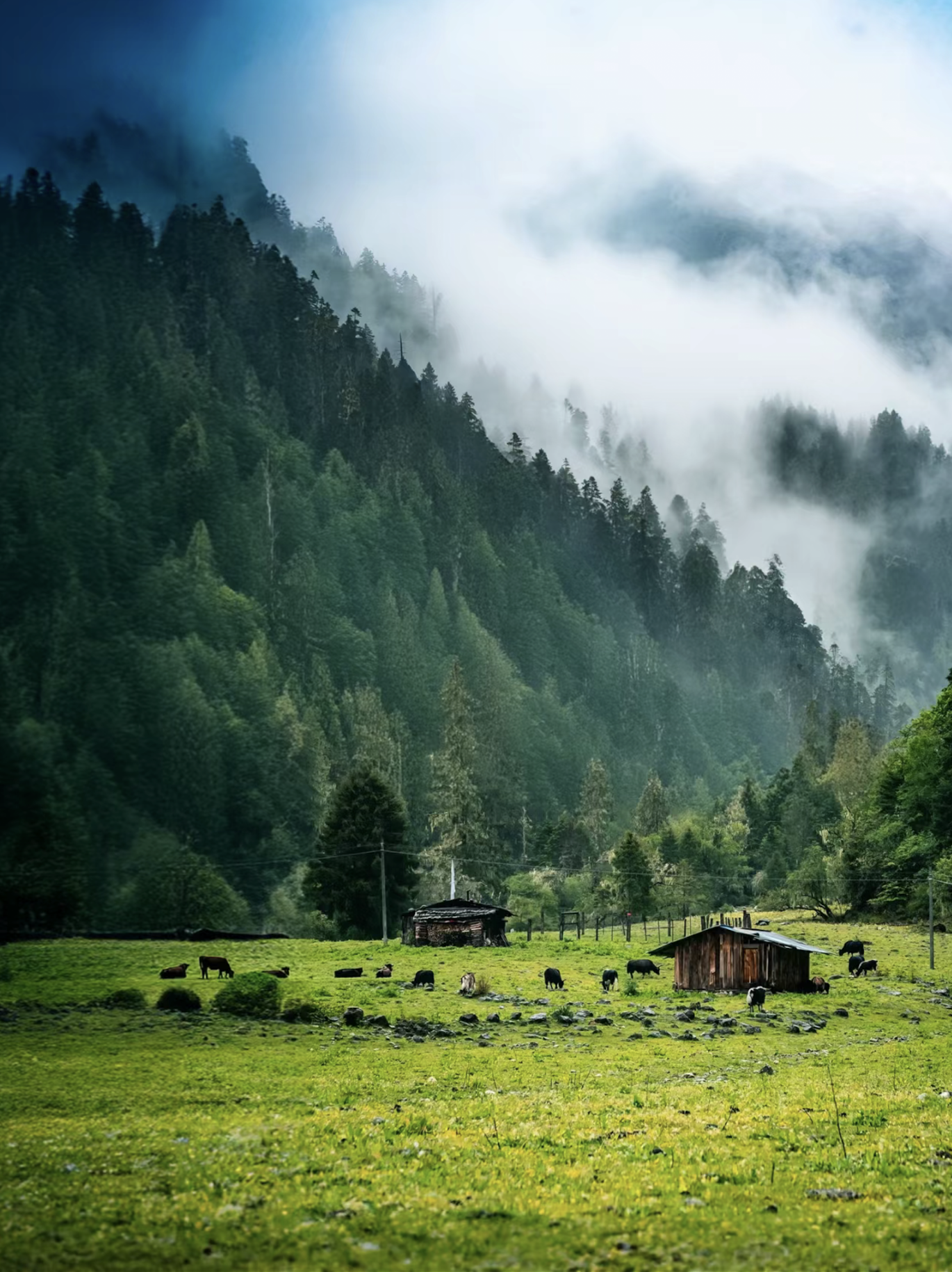
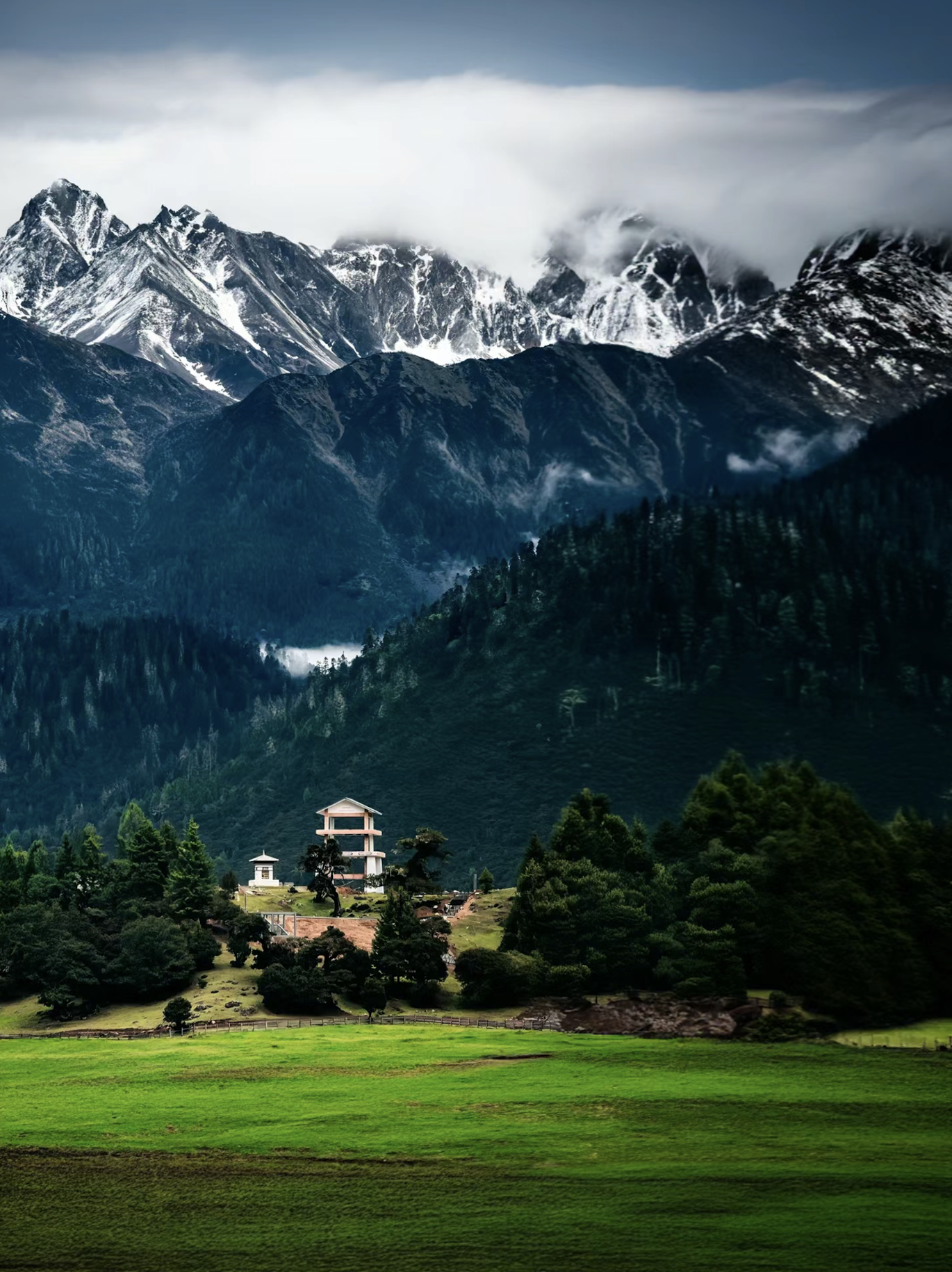
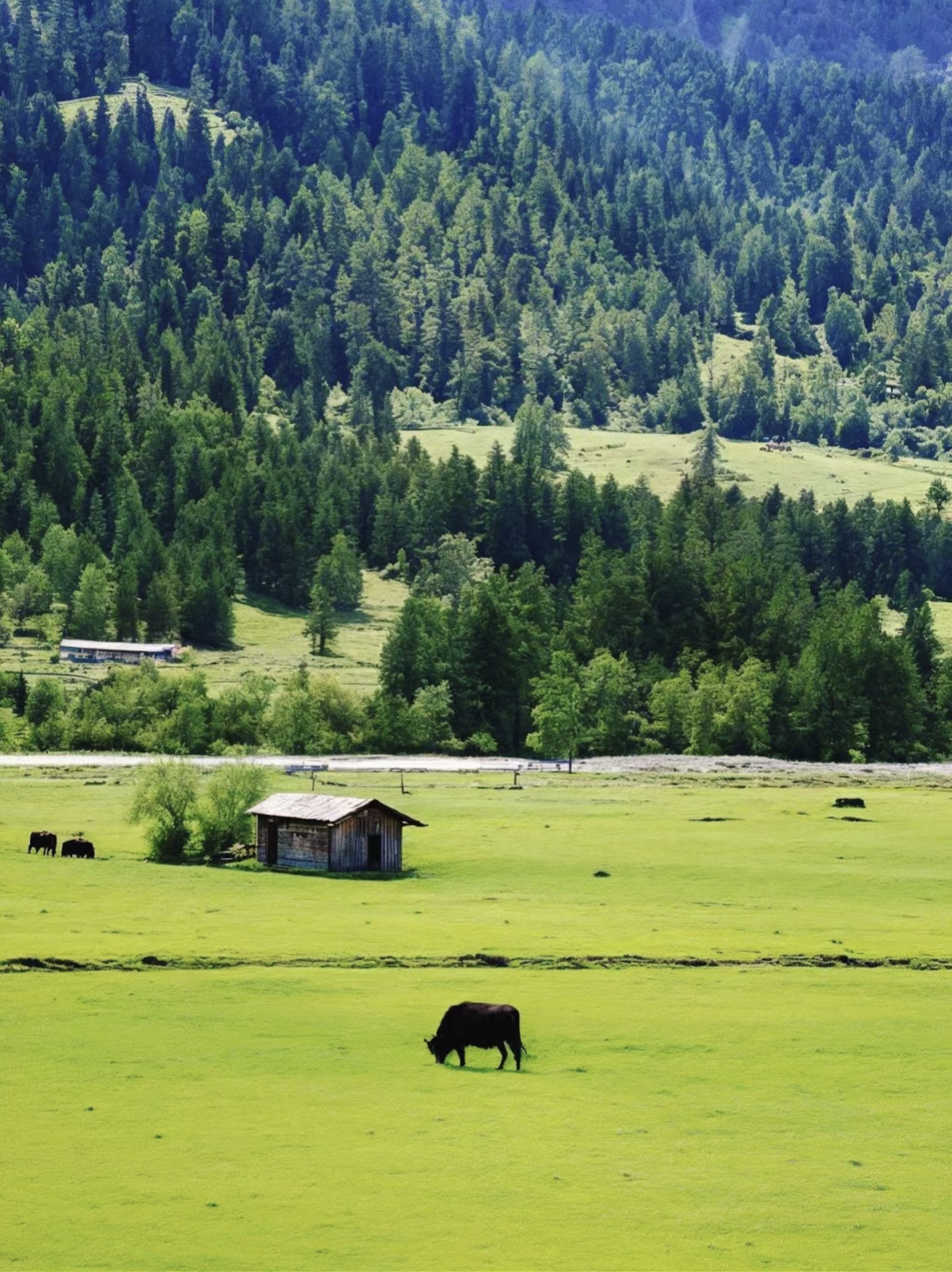
Often called the "Swiss of the East," Rulang is known for its clouds, mountains, Tibetan houses, meadows, fences, and flowing streams, creating a tranquil and picturesque scene. I highly recommend that anyone traveling from Lhasa to Nyingchi make sure to visit Rulang, as it is a must-see destination in Nyingchi!
[Rulang Stone Pot Chicken]
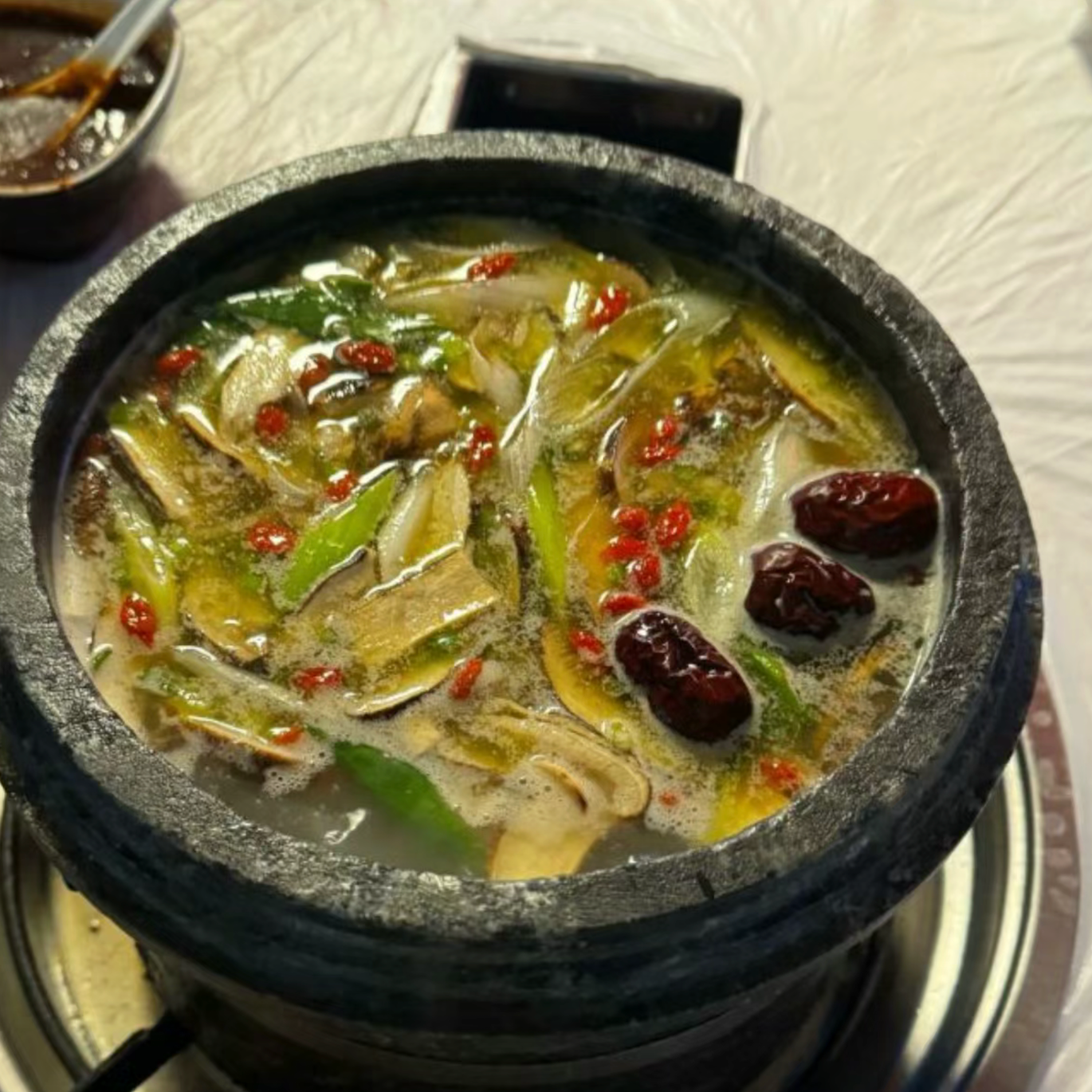
In Rulang, you can enjoy the famous Stone Pot Chicken, priced around 300 RMB per pot. There are dozens of restaurants in town to choose from, and I’ve tried several, all of which were good. The Rulang stone pots are made from a special type of mica stone unique to Motuo, which must be transported by porters from Motuo. The local Menba people carefully carve the stone into pots by hand, making them expensive. The chicken is cooked slowly in the stone pot with local herbs and is known for its unique flavor, with a hint of medicinal aroma and tender, elastic meat.
- Yarlung Tsangpo Grand Canyon
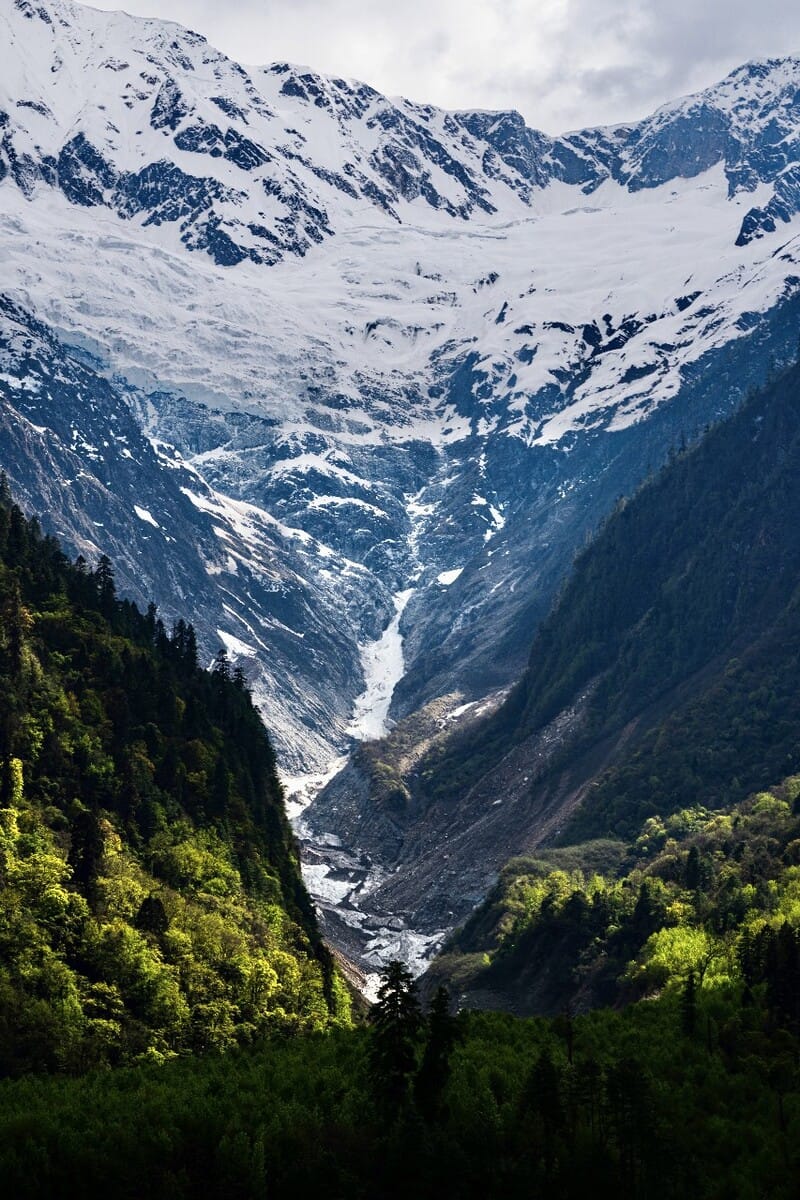
After lunch in Rulang, head to the Yarlung Tsangpo Grand Canyon, a prominent attraction in Nyingchi. As one of the world's most famous canyons, it draws thousands of visitors daily. The ticket price can be a bit steep (240 RMB for the entrance and sightseeing bus, with an optional 50 RMB for the self-service cafeteria), but missing it might be a regret. The real attraction here is not just the canyon, but Namcha Barwa Peak. The village of Zhizhai in the canyon is the best place to view Namcha Barwa Peak up close. If you're very lucky, you might see the peak bathed in golden sunlight. I’ve seen this twice, and it was truly breathtaking, surpassing even the Meili Snow Mountain. After exploring the canyon, you can proceed to Gacha (the county seat of Lamaling Lake). Overnight stay in Gacha.
💡 Tips
- The truly spectacular bend of the Yarlung Tsangpo River is not visible in this scenic area. To see it, you can either charter a vehicle or hike from the end of the canyon’s sightseeing bus route in Zhizhai Village to Galu Village, though this is a less common route. Alternatively, you can see it on the way to Motuo at Guoguo Tang.
- On the road from the Grand Canyon to Gacha, there’s a scenic spot called Nanyi Valley with a 200 RMB entrance fee. It only features primitive forest and lacks highlights, so it’s best to skip it.
E-Day 3: Gacha — Lamaling Lake — Yumbulagang — Zedang
This day features two must-see attractions: the mystical Lamaling Lake (said to show glimpses of your past and future lives) and Yumbulagang, the first palace in Tibet and a summer retreat for Songtsen Gampo and Princess Wencheng. Overnight stay in Zedang.
- Lamaling Lake
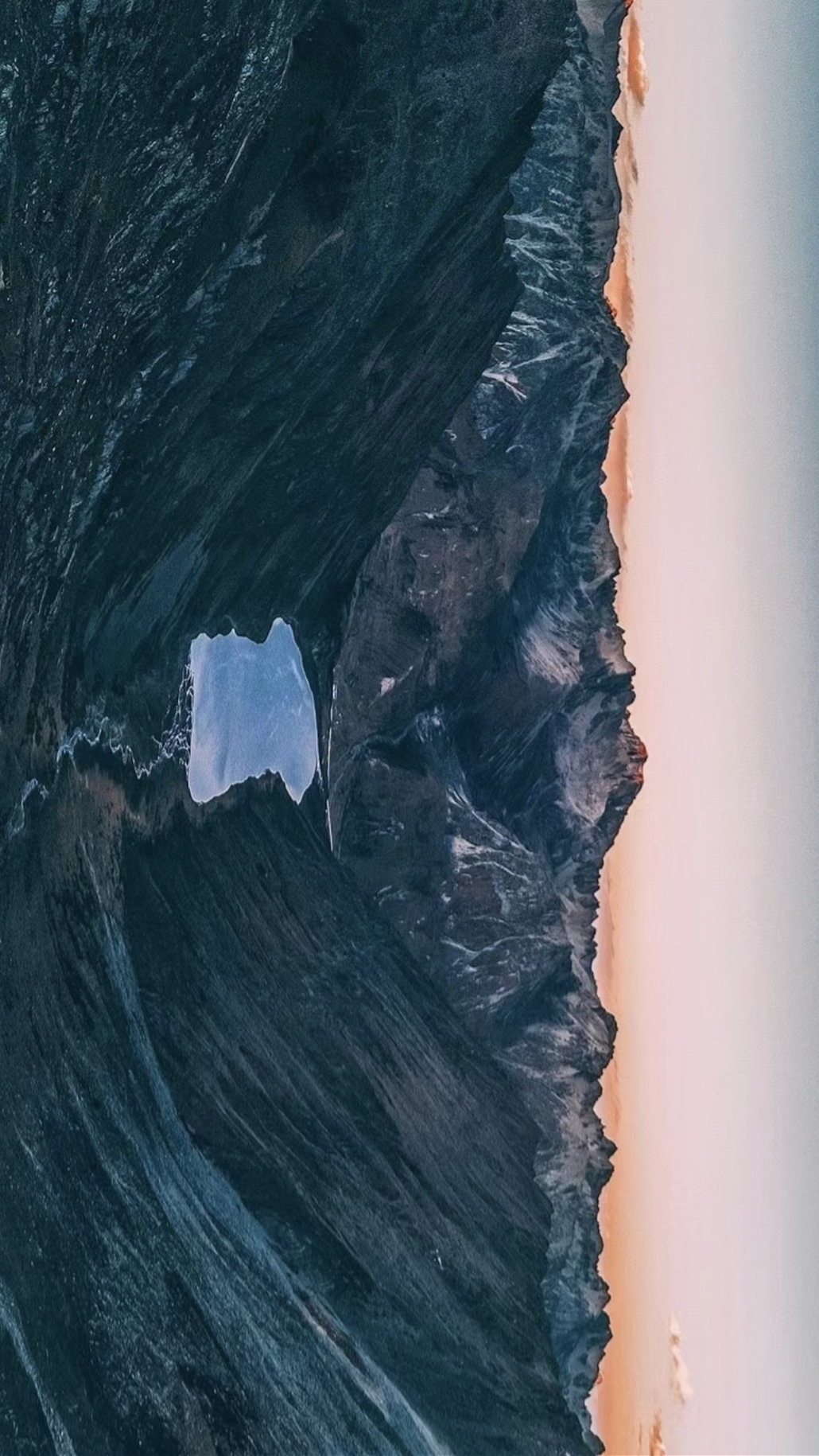
Located among the mountains, Lamaling Lake is known as the "Lake of the Celestial Maiden" in Tibetan. Its shape resembles a human skull, which Tibetans believe represents the skull of the auspicious celestial maiden. Many pilgrims visit from the fourth to sixth months of the Tibetan calendar to seek spiritual insight. It’s said that if you look into the lake with sincerity, you might see visions of your past and future lives. This lake is shrouded in mystery and is often referred to as a "reflection lake."
Admission Fee: 50 RMB
Transportation: Hire a vehicle from Gacha County. The entrance fee during the off-season is 100 RMB per person. It takes about half an hour to drive from Gacha County to the park entrance, and another hour to drive up the winding mountain road to the lake. Once you reach the parking lot, you need to hike up a 30-meter-high mountain to see the lake.
💡 Tips
- The best time to visit is from May to October. In winter, heavy snow might block the road, limiting access to the viewpoint.
- At an altitude of 5,330 meters, the air is thin. The viewpoint is not high, but climbing up can be challenging. Take breaks and don’t rush.
- Avoid loud noises at the summit to respect the pilgrims who are silently gazing at the lake.
- Do not leave any trash on the mountain, as it’s considered disrespectful to the sacred lake.
- Yumbulagang
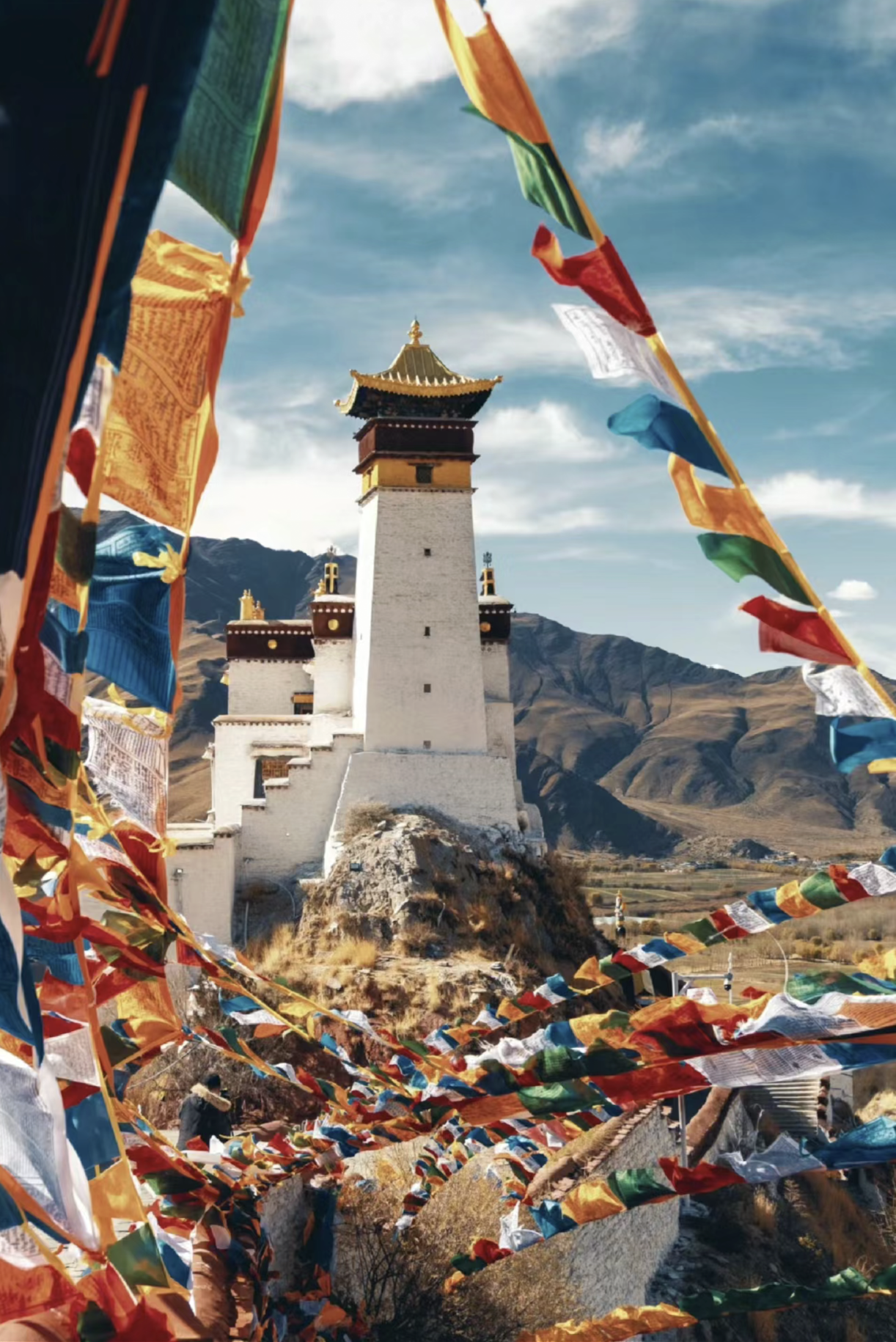
Yumbulagang, the first palace in Tibet, is over 2,000 years old and was used as a summer retreat by Songtsen Gampo and Princess Wencheng. Located 11 kilometers from Zedang on the Zaxi Cuozong Mountain, it may be small, but it is imposing and offers a grand view. From the tower, you can enjoy a panoramic view of the Yarlung Valley and the surrounding countryside. The entrance fee is 50 RMB, and the interior of the palace is not open for visits.
💡 Tips
- At the base of the mountain, there’s a small market with a few stalls selling Tibetan crafts like bracelets and beads. Prices are reasonable and negotiable.
- The mountain path is zigzagged with steps. To avoid altitude sickness, climb slowly, which should take about half an hour. Alternatively, you can pay to ride a horse up a non-step path for 30 RMB per person.
E-Day 4: Zedang — Yamdrok Lake — Lhasa
Today, you’ll head back to Lhasa from Zedang, with your first stop being Yamdrok Lake, one of the three sacred lakes in Tibet. (You’ll visit Yamdrok Lake again on the following route from a different perspective.)
- Yamdrok Lake
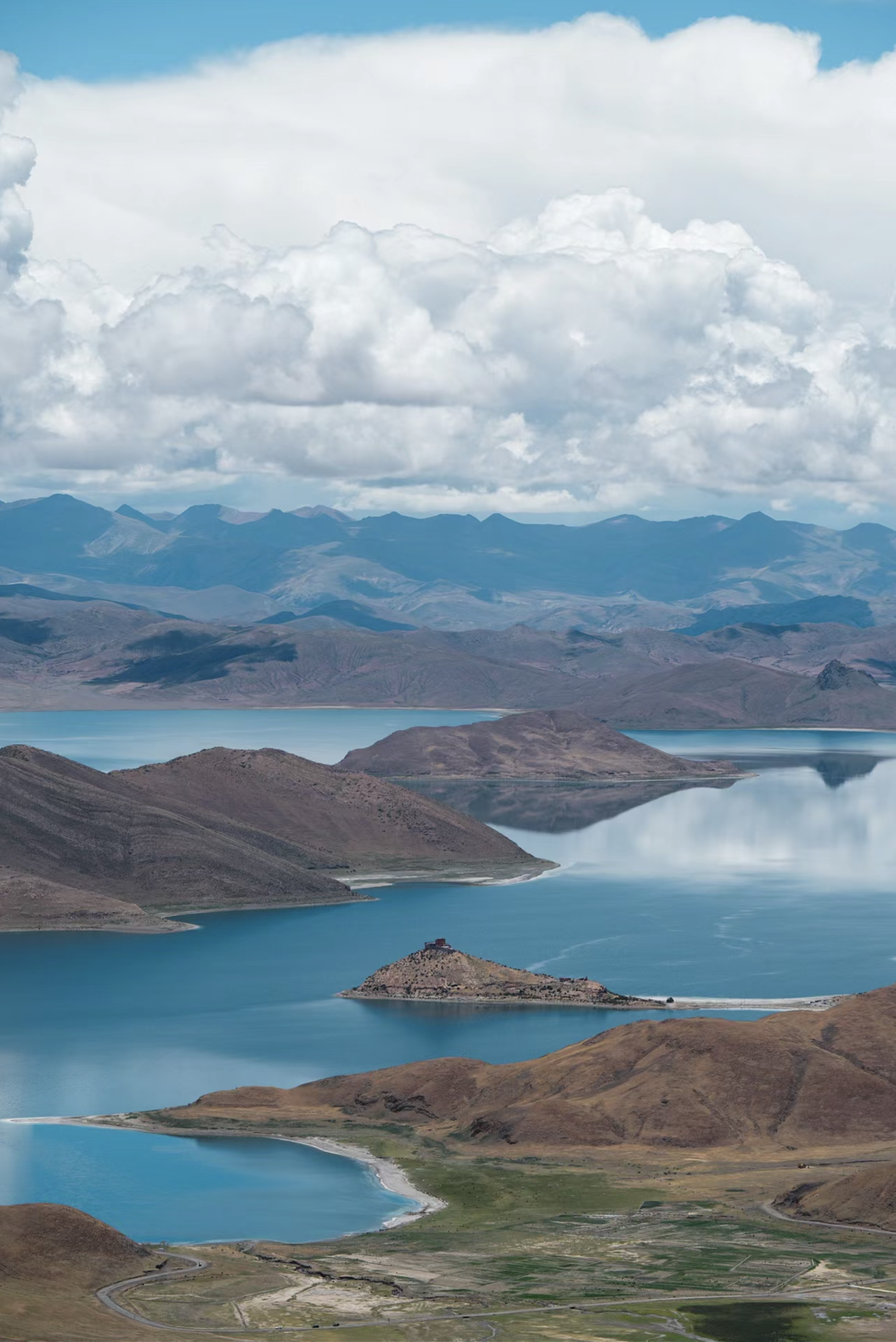
Also known as Yam Lake, it is one of Tibet's three major sacred lakes alongside Manasarovar and Namtso. It’s my personal favorite (Namtso is to the north of Lhasa and can be visited in a day; Manasarovar is in the Ali region and has a more challenging climate and environment). Yamdrok Lake is located in Nanggarze County, Shannan Prefecture, with its turquoise water resembling a smooth jade ribbon draped across the mountains. The lake sits at an altitude of 4,100 meters, surrounded by snow-capped peaks that make the lake even more dazzling. The color of Yamdrok Lake is even more stunning than Qinghai Lake and Namtso! It is the endpoint of the southeastern Tibetan circuit and the starting point of the western circuit. If you want to visit the viewpoint, the entrance fee is 40 RMB.
Transportation: Buses from Lhasa to Shigatse now take a new route and no longer pass by Yamdrok Lake. Therefore, to visit Yamdrok Lake, you’ll need to hire a car, hitch a ride, or join a day tour.
💡 Tips
- For photographing Yamdrok Lake, you can capture it from a distance on the surrounding mountains. The Milky Way is also spectacular at night. If you visit in August, you can even photograph the rapeseed flowers!
- There are one-day tours from Lhasa to Yamdrok Lake, with some departing in the morning and others in the afternoon. I recommend the afternoon departure because the morning fog often obscures the lake, making it less visible. In the afternoon, the sun will be in the perfect position, though you might experience some backlighting, the colors of Yamdrok Lake you’ll see are stunning.
- Be prepared for ID checks along the way, so have your identification ready.
After visiting Yamdrok Lake, return to Lhasa for some rest and prepare for the upcoming four-day tour of Shigatse and Everest. Overnight stay in Lhasa.
Nyingchi has three classic carpool routes that you can choose from based on your schedule. The three routes are three, four, or five days long.
All three routes include a view of Namcha Barwa Peak, so you won’t miss this majestic mountain regardless of your choice. The differences lie in the duration and the attractions covered. If you like Lamaling Lake and Yamdrok Lake, the four-day and five-day routes are ideal for you. If you have ample time, the five-day circuit allows you to avoid a separate trip to Namtso. Overall, each route covers key attractions, so choose according to your preferences.
4-Day Western Tibet Tour: Lhasa — Shigatse — Everest Base Camp — Lhasa
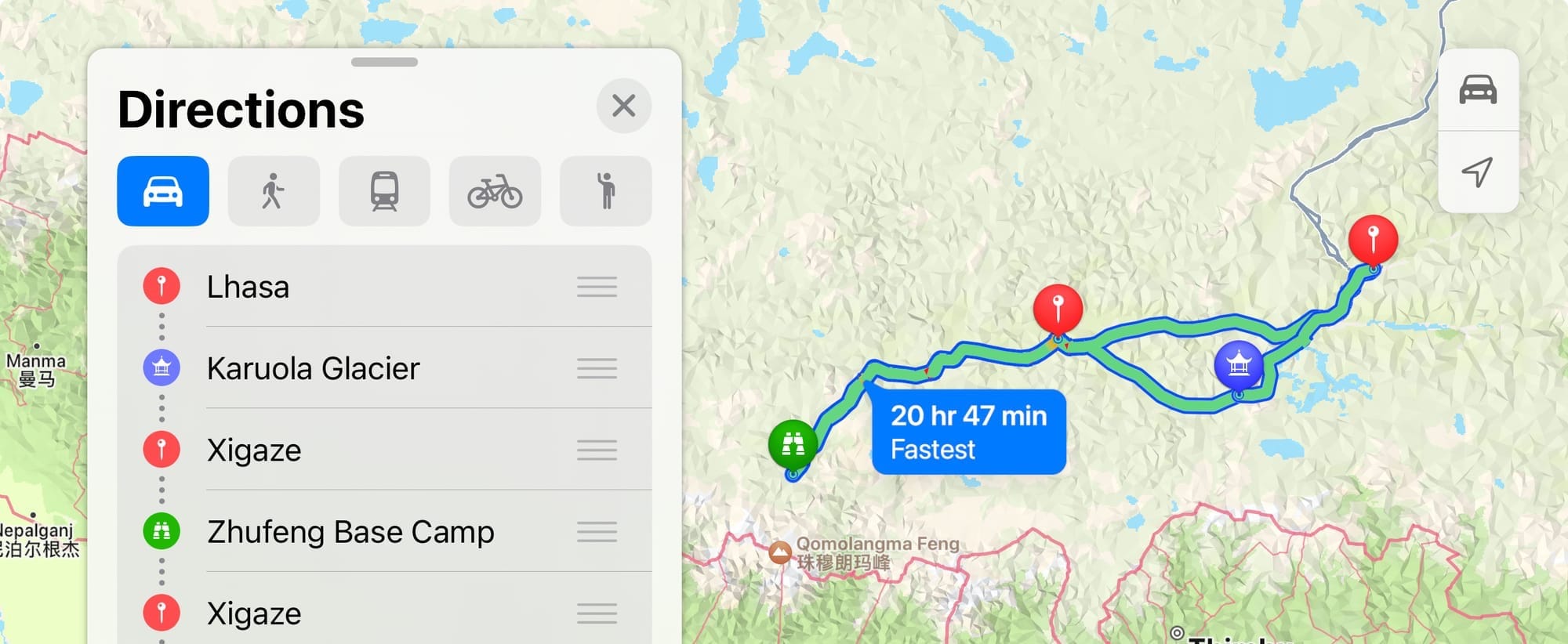
Itinerary:
- Day 1: Lhasa — Karola Glacier — Shigatse
- Day 2: Shigatse — Everest Base Camp
- Day 3: Everest Base Camp — Shigatse
- Day 4: Shigatse — Tashilhunpo Monastery — Lhasa
W-Day 1: Lhasa — Karola Glacier — Shigatse
After completing the eastern and southeastern routes, begin heading west along National Route 318. Turn south on Provincial Route 307 in Daga Township, continuing down from Yamdrok Lake until you spot the Karola Glacier.
- Karola Glacier
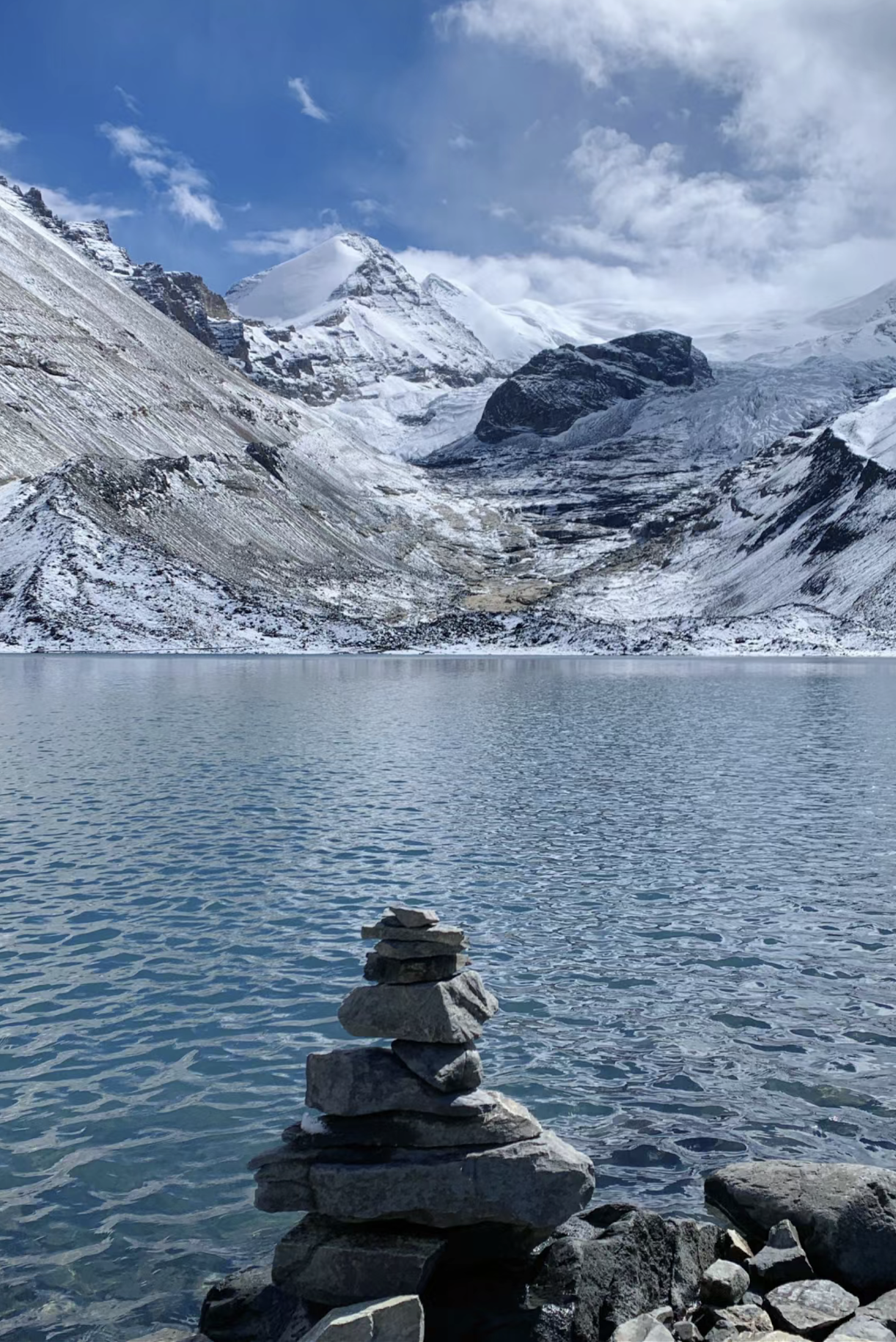
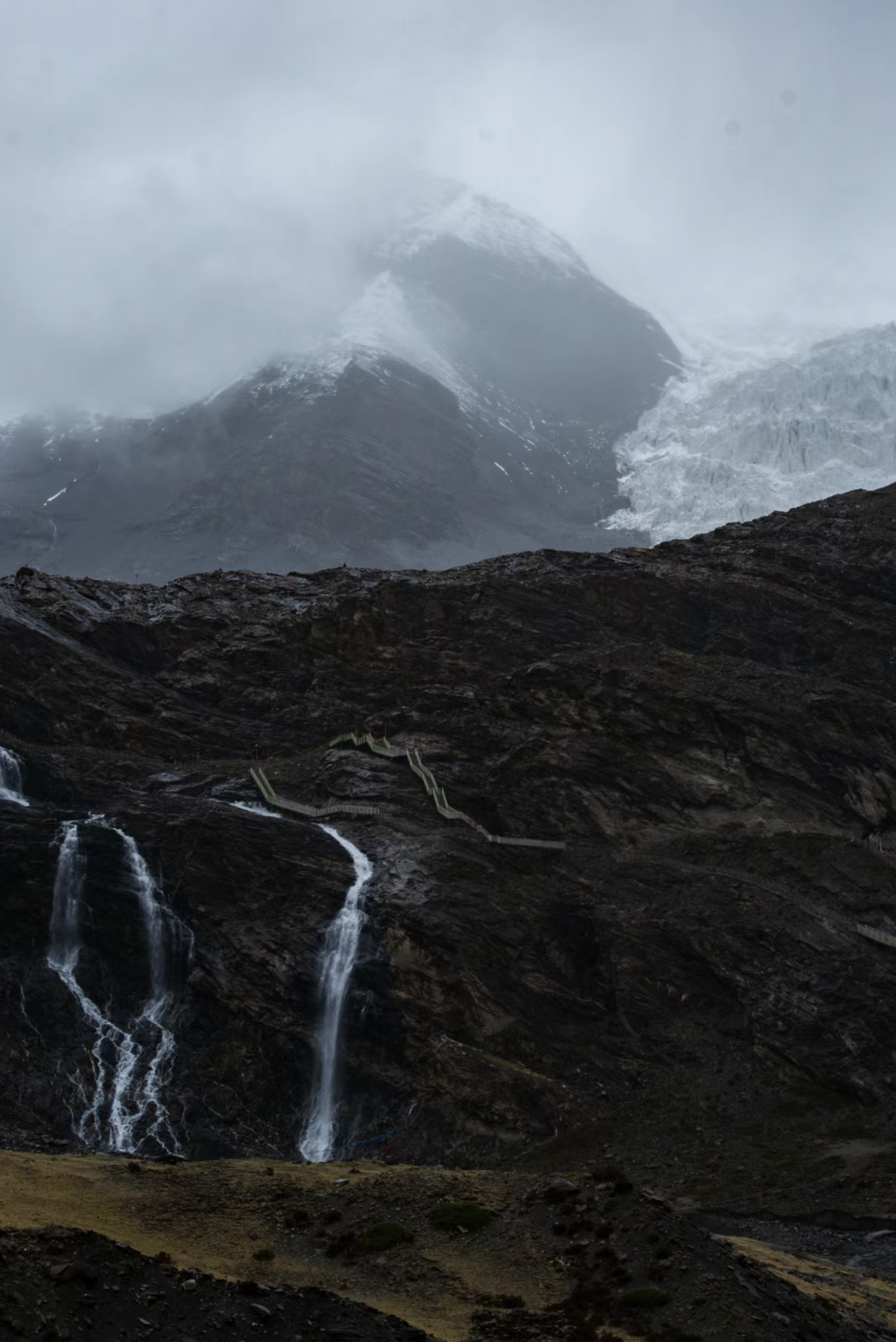
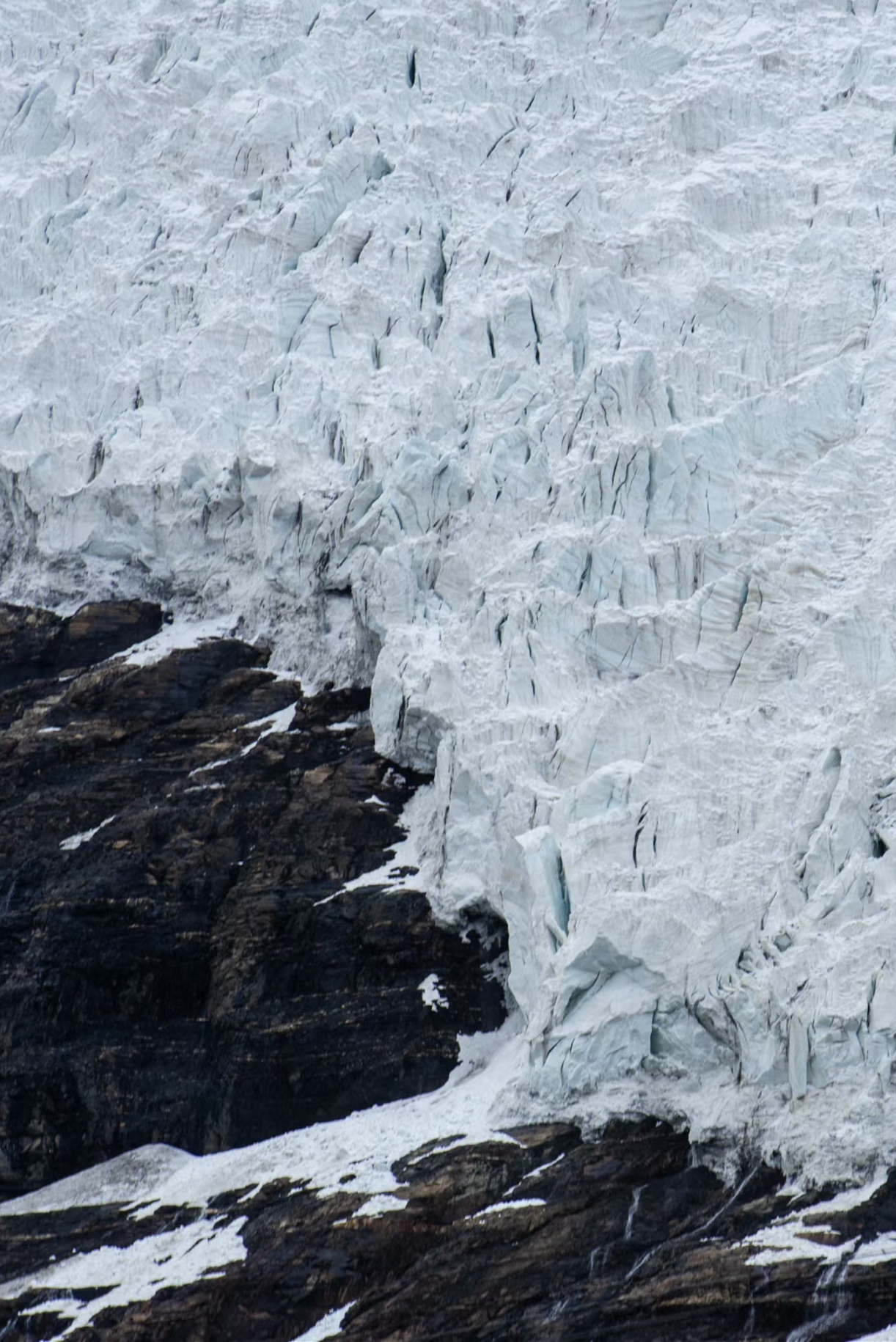
This glacier is close to the road and has been featured in films like Red River Valley and Clouds and Water. The massive glacier tongue extends down from the mountain, forming a striking contrast with the white snow. The jagged ice formations give it a powerful, awe-inspiring presence. There is a viewing platform set up by local Tibetans along the road for photography, with a fee of 50 RMB. Drivers familiar with the area often know of free yet equally spectacular viewpoints, so if you're on a carpool tour, your local driver might stop at one of these places for breathtaking views and photos.
💡 Tips
- Ten years ago, you could touch the glacier tongue from the roadside, but now it has receded to about 300 meters away. If you don’t visit soon, you might miss it entirely.
- If heading towards Yamdrok Lake, after passing the glacier fee station, there is a small hill where you can park and get a close-up view of the glacier without any additional charges. This spot offers a particularly good perspective. A local driver once took National Geographic photographers here.
- On the road from Karola Glacier to Shigatse, there is a place called Parla Manor, located just west of Jiangzi County. The entrance fee is 50 RMB. I visited and found it unremarkable, so I don’t recommend it.
After leaving the glacier, continue west on Provincial Route 307, have lunch in Jiangzi County, and then arrive in Shigatse. In Shigatse, you can rent an oxygen bottle for 15 RMB if you’re concerned about altitude sickness at Everest Base Camp. Overnight stay in Shigatse.
W-Day 2: Shigatse to Everest Base Camp
Today promises to be unforgettable, as you'll reach the Everest Base Camp, the gateway to the world's highest peak. The sunrise over Everest, the majestic cloud formations, and the star-studded night sky are experiences you may never encounter again.
As you navigate the winding mountain roads towards Everest, the scenery alone will take your breath away. Amidst the towering peaks, you'll catch your first glimpse of Everest. The excitement is palpable—everyone’s enthusiasm builds as the guide confirms, "Yes, that's Everest!" The thrill of seeing Everest for the first time is a shared moment of awe.
On your way, you’ll pass Rongbuk Monastery. Some itineraries schedule a visit to the monastery on the return journey to the base camp.
- Everest Base Camp
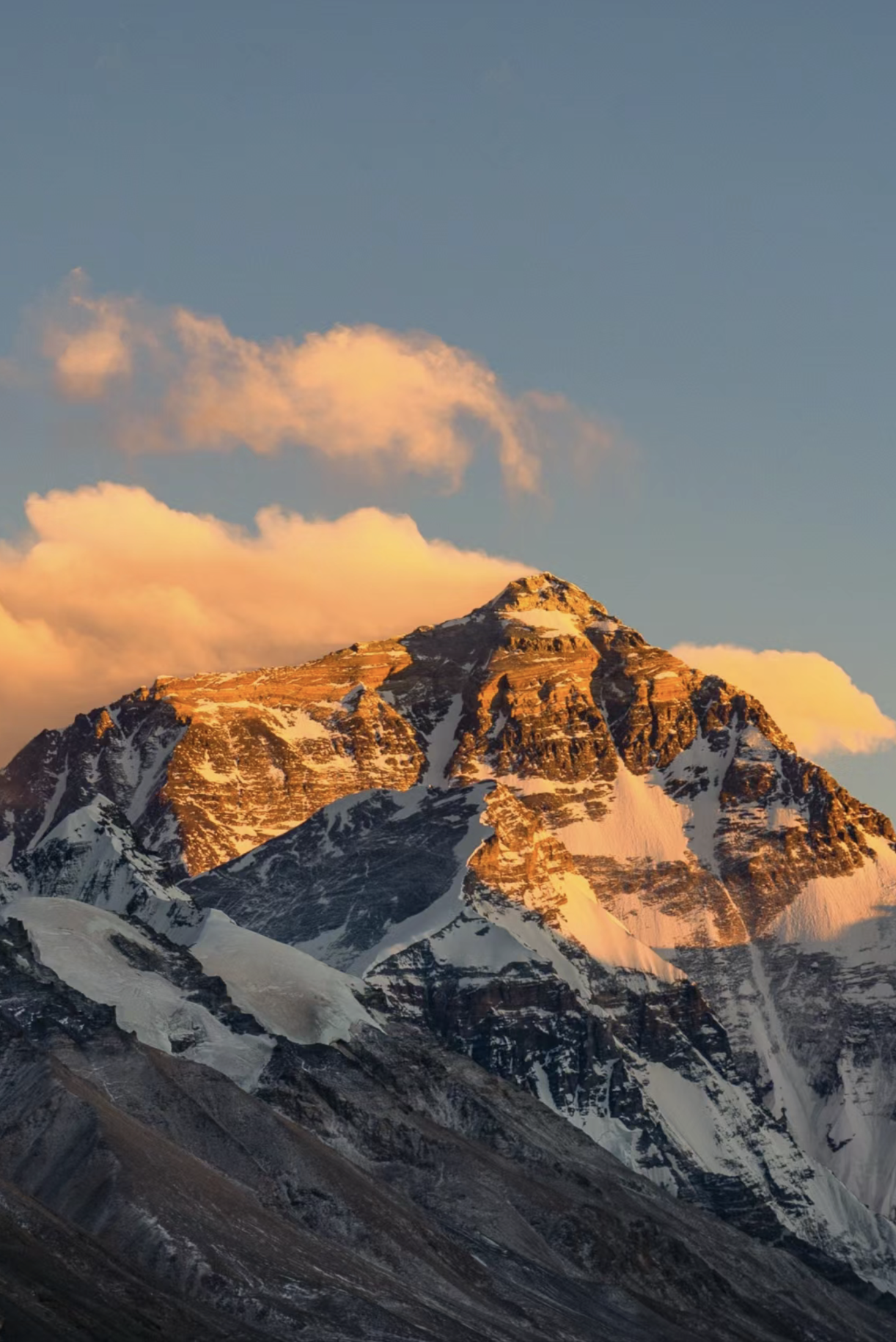
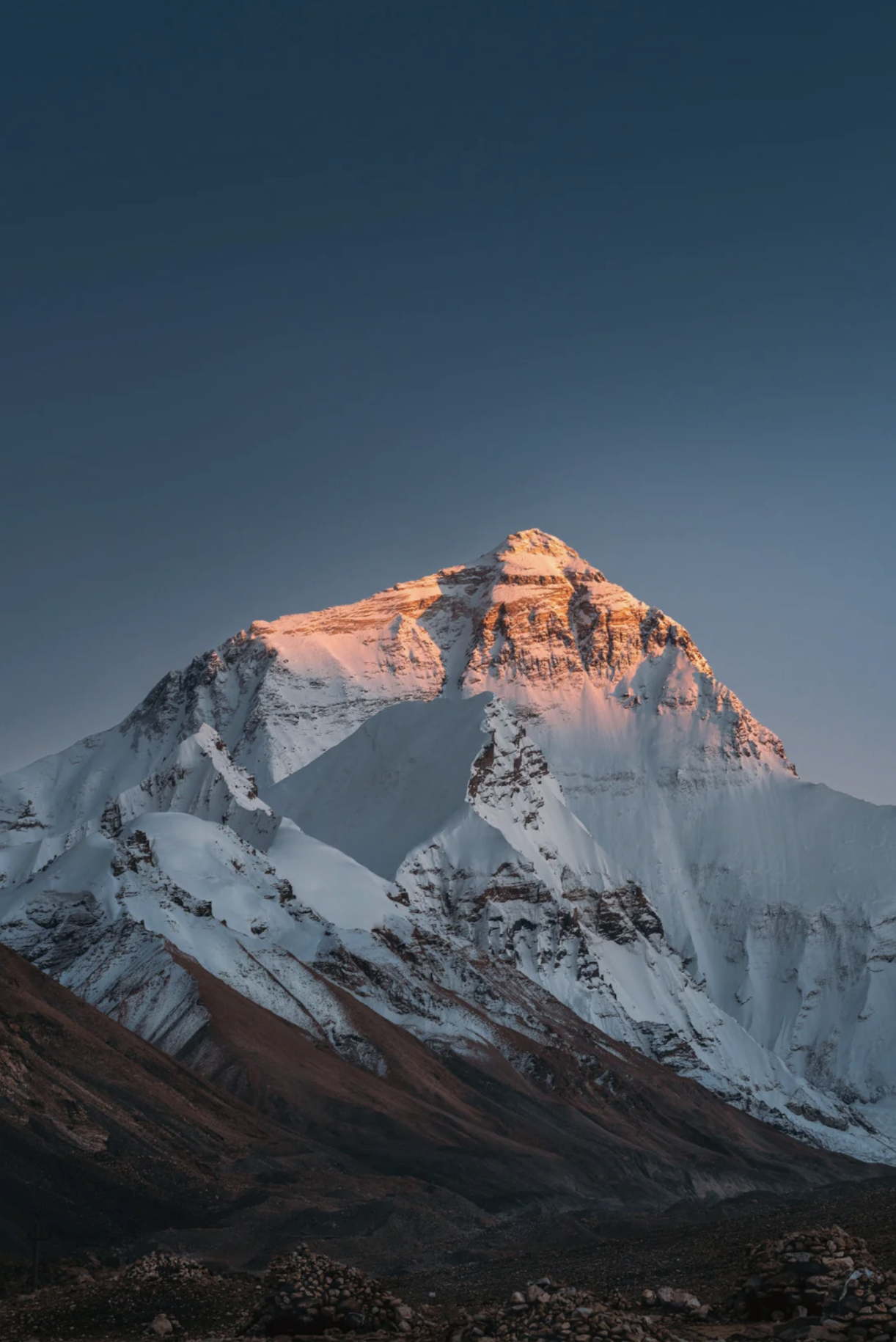
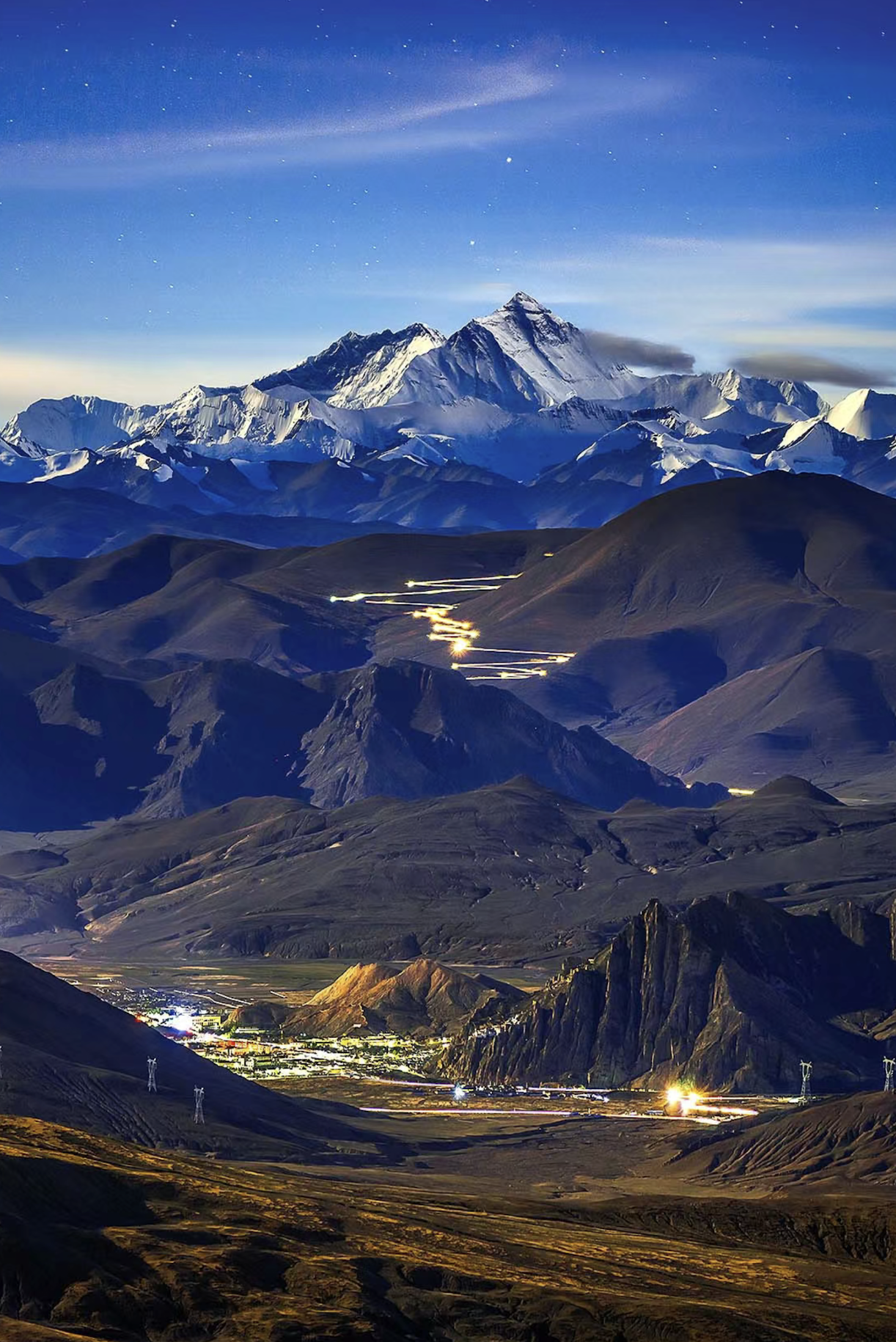
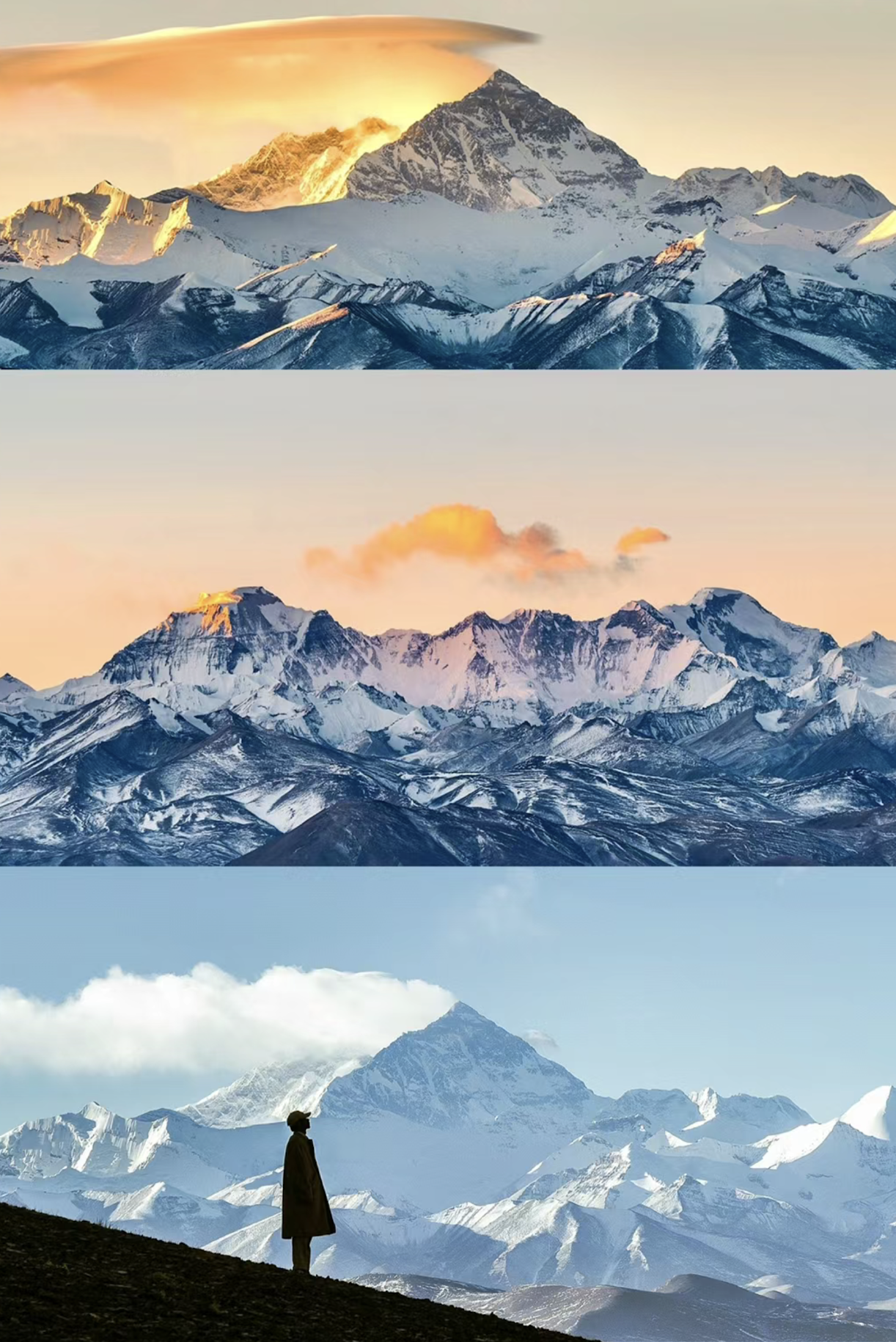
Situated south of Rongbuk Monastery, the base camp is surrounded by a cluster of tented lodges, with the Chinese and Everest Reserve flags proudly displayed. This camp primarily offers basic accommodation with simple amenities like toilets and a tent post office. This is the highest post office in the world, where you can buy postcards and send them to friends far away, making for a unique memento.
To preserve the environment around Everest, the camp avoids permanent structures, except for basic toilets. The local Tibetan people set up tents to provide accommodation for visitors. During the off-season, these tents are dismantled. Sleeping arrangements are very basic, with up to seven or eight people sharing a tent, sleeping on beds arranged around the perimeter, and a central stove for warmth and boiling water. Meals often consist of instant noodles. At night, you can photograph the starry sky and star trails over Everest. Early the next morning, you can capture the sunrise over the peak.
Everest Entrance Fees: The entrance fee for Everest is 180 RMB, plus a 100 RMB per-person mountain access fee. This 280 RMB is well worth it for the experience.
💡 Tips
- Obtain a border pass in advance for Everest. For day tours, travel agencies usually handle this, and it is often included in the tour cost.
- From the base camp to the closest viewing point of Everest, there is some distance to cover. You can either take the park's shuttle bus for 25 RMB round-trip or opt for a hike, which offers a more immersive experience. Beyond the viewing area, only climbers with permits can access further areas, including the spectacular Rongbuk Glacier and Ice Tower Forest.
- Sleeping bags and military coats can be rented at the base camp for 50 RMB each. The cleanliness may be questionable, so it's advisable to bring your own down jacket or sleeping bag.
W-Day 3: Everest Base Camp to Shigatse
After watching the sunrise over Everest and enjoying a simple breakfast of Tibetan porridge, it’s time to bid farewell to the highest peak. On the return journey, you'll pass Rongbuk Monastery again. Continue along National Route 318 to Shigatse for the night. It’s not possible to return to Lhasa in one day from Everest.
- Rongbuk Monastery
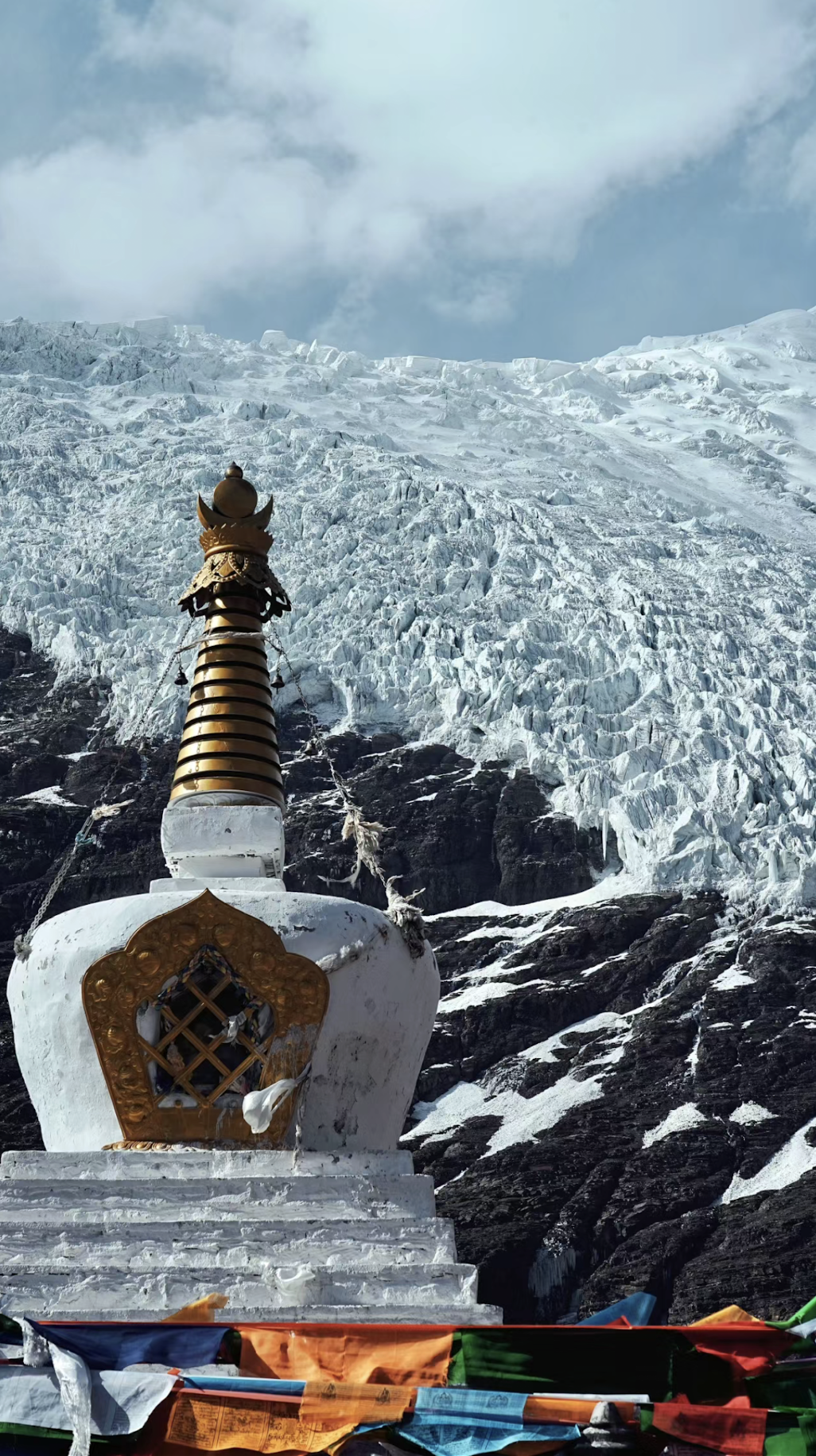
Known as the highest monastery in the world, Rongbuk is renowned for its location at the foot of Everest. The monastery is modest in size but offers stunning views of Everest, resembling a colossal pyramid from the south. Historically, Rongbuk served as the gathering place for mountaineers before the base camp was established. It also offers basic lodging, with prices around a few dozen RMB per night.
W-Day 4: Shigatse to Lhasa via Tashilhunpo Monastery
On your return to Lhasa, don’t miss a visit to Tashilhunpo Monastery, one of the six major Gelug monasteries (the others are Ganden Monastery, Sera Monastery, Drepung Monastery in Lhasa, Ta'er Monastery in Qinghai, and Labrang Monastery in Gansu).
- Tashilhunpo Monastery
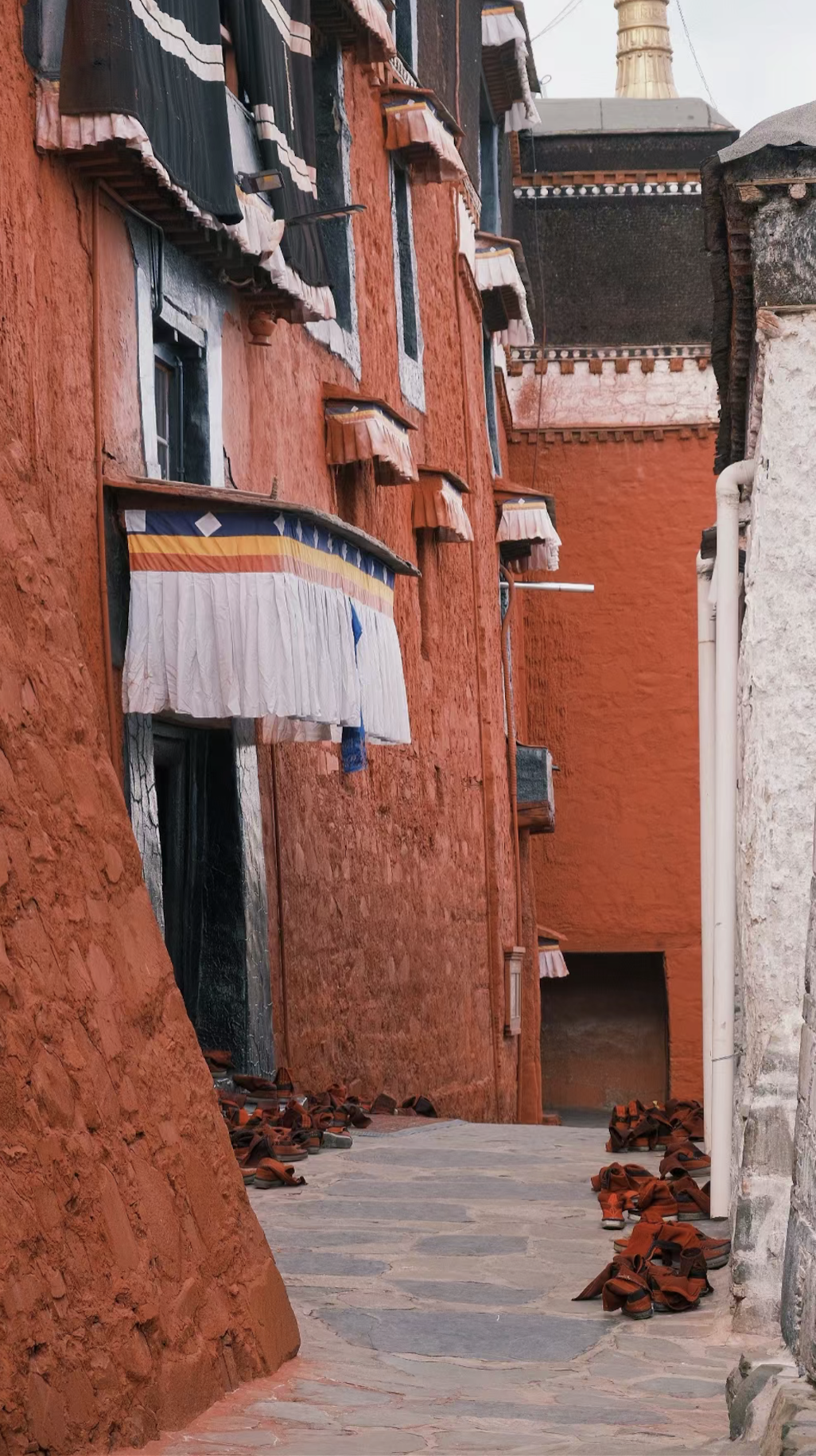
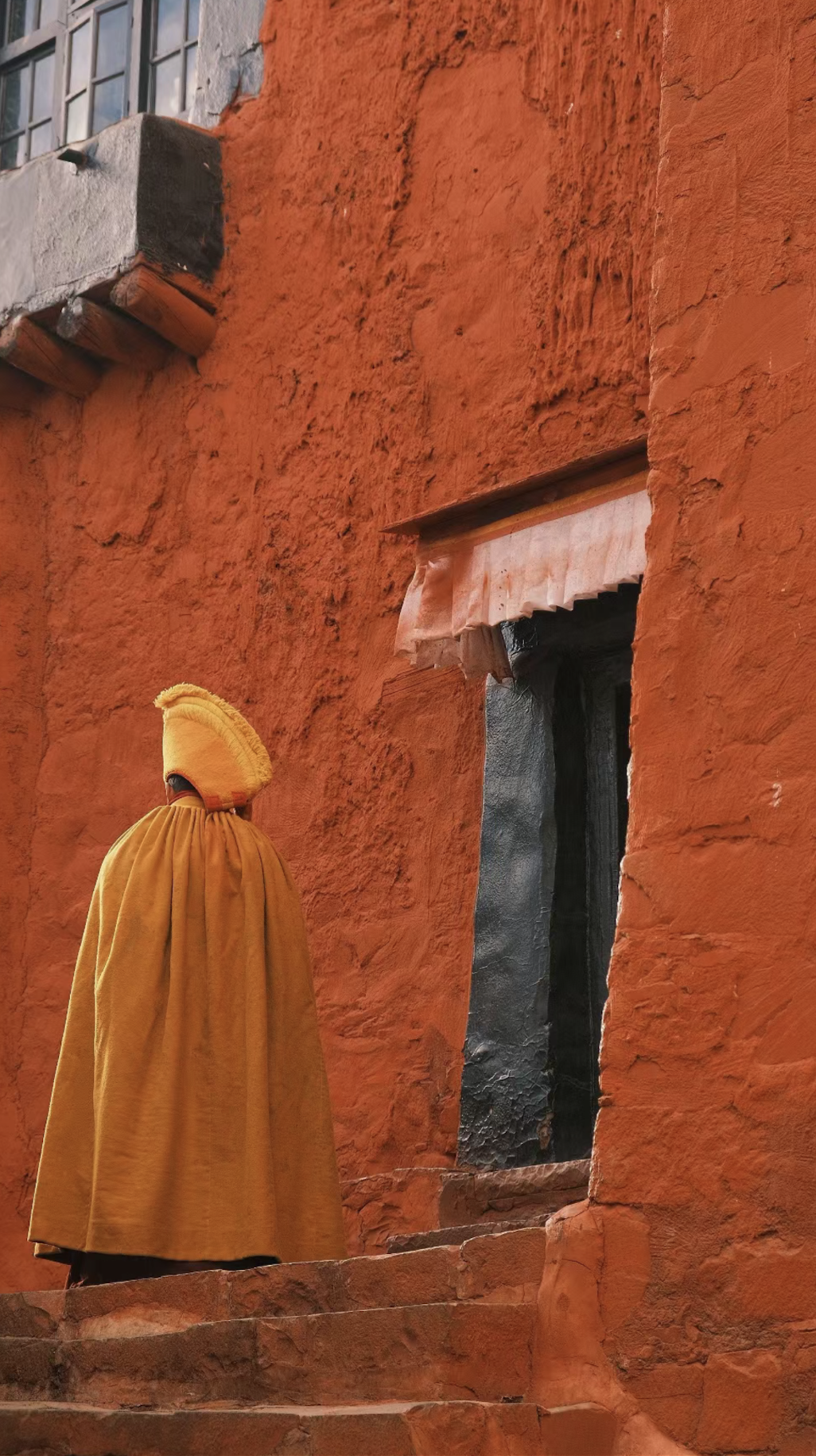
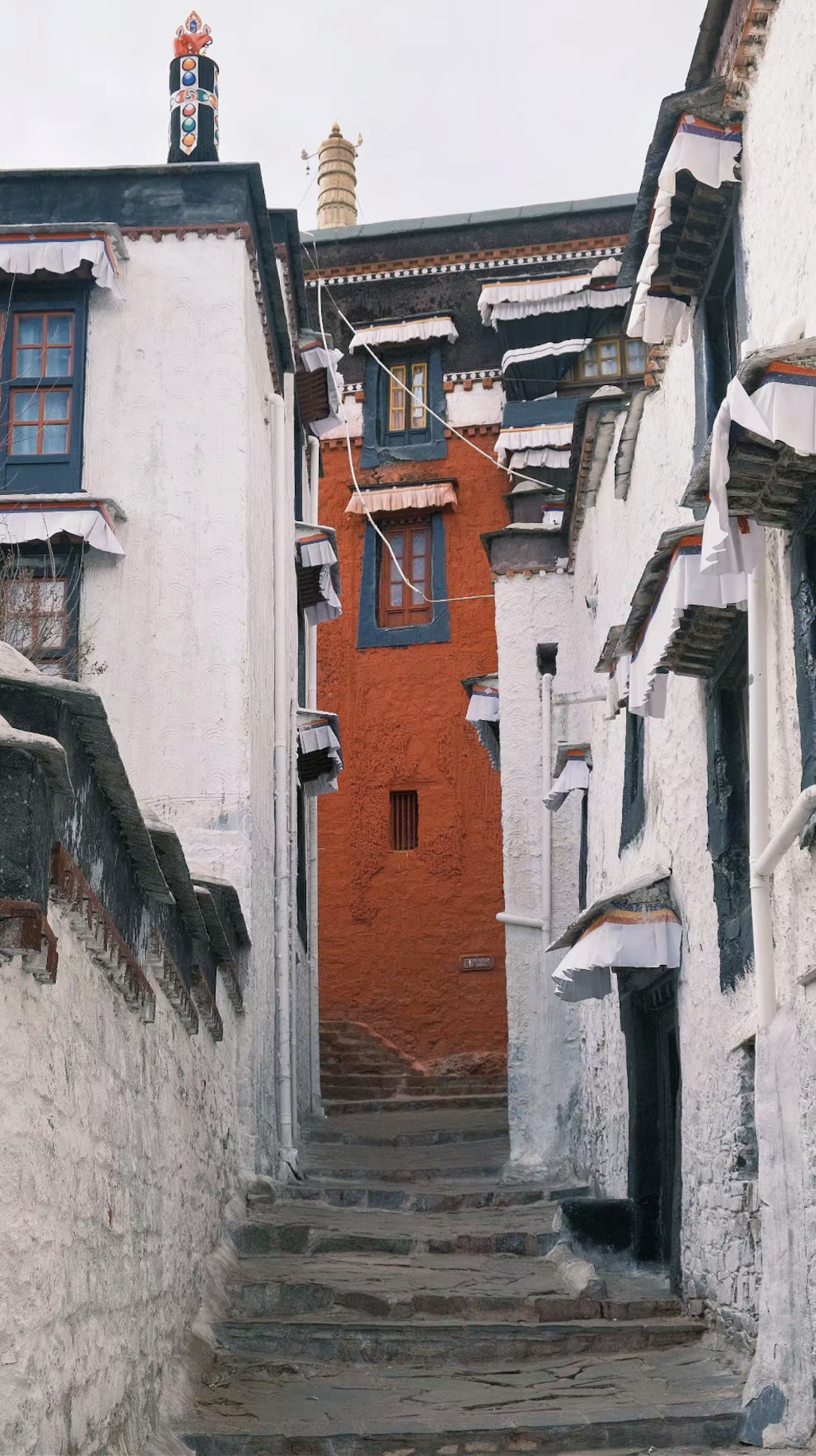
In Buddhist tradition, if “sun” represents the Dalai Lama and the Potala Palace, then the “moon” symbolizes the Panchen Lama, which is embodied by Tashilhunpo Monastery. This monastery has been the seat of the Panchen Lama since the Fourth Panchen Lama and is renowned for its splendid architecture. Located in the heart of Shigatse, it’s easily accessible on foot.
Entrance fees are 80 RMB per person during peak season (May-October) and 40 RMB during the off-season (November-April).
💡 Tips
- The monastery's exhibition hall offers panoramic views of Shigatse and the monastery itself.
- Unlike the Potala Palace in Lhasa, Tashilhunpo is open for visits throughout the day, including morning, noon, and afternoon.
- Be respectful and avoid photographing monks.
- Recommended Itineraries
For those interested in Everest, two popular routes are available: the classic 4-day Everest tour or the 5-day Everest-Namtso circuit. The latter offers the convenience of avoiding a separate trip to Namtso Lake and allows for an overnight stay near the lake to experience its stunning night sky.
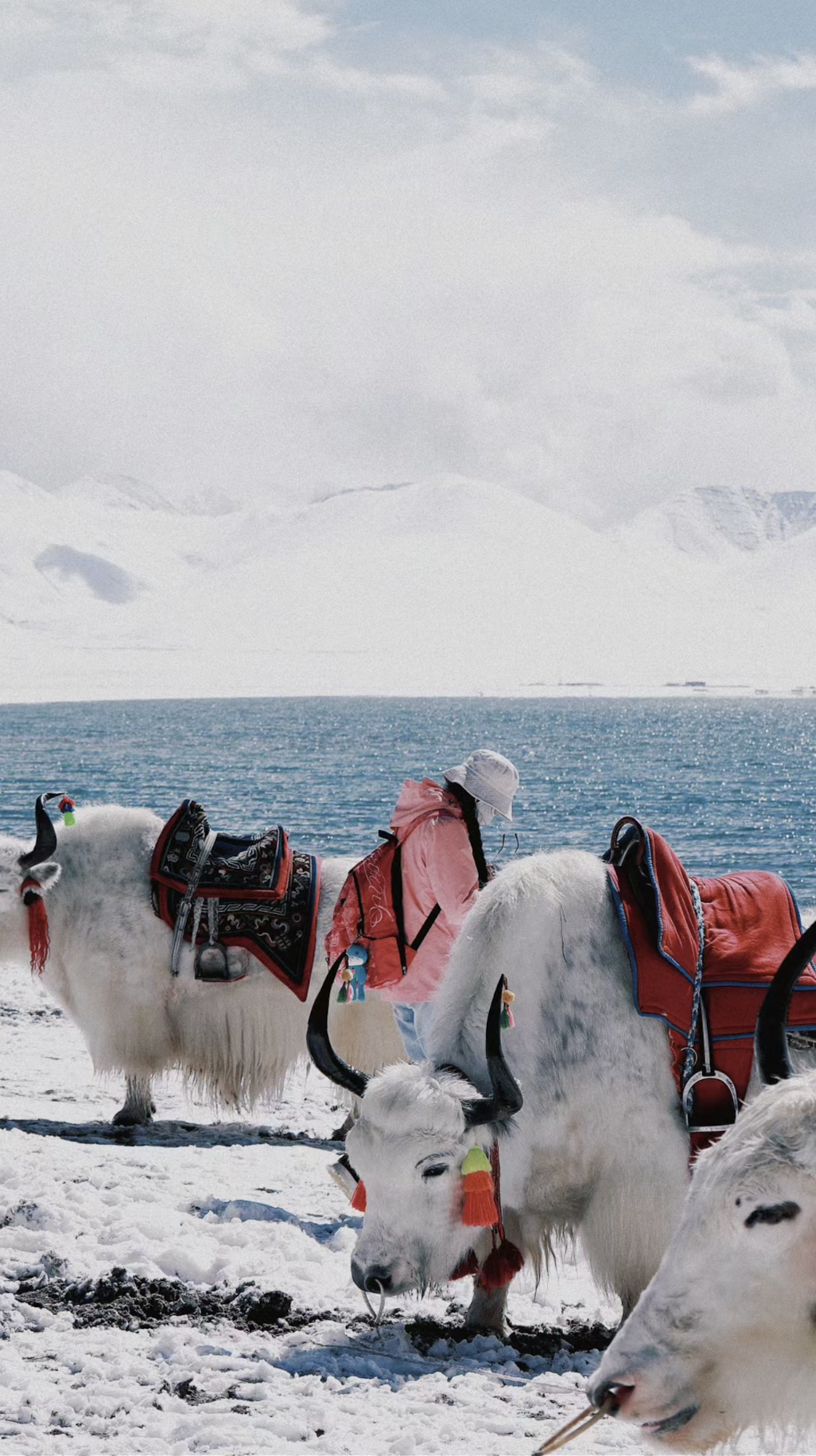
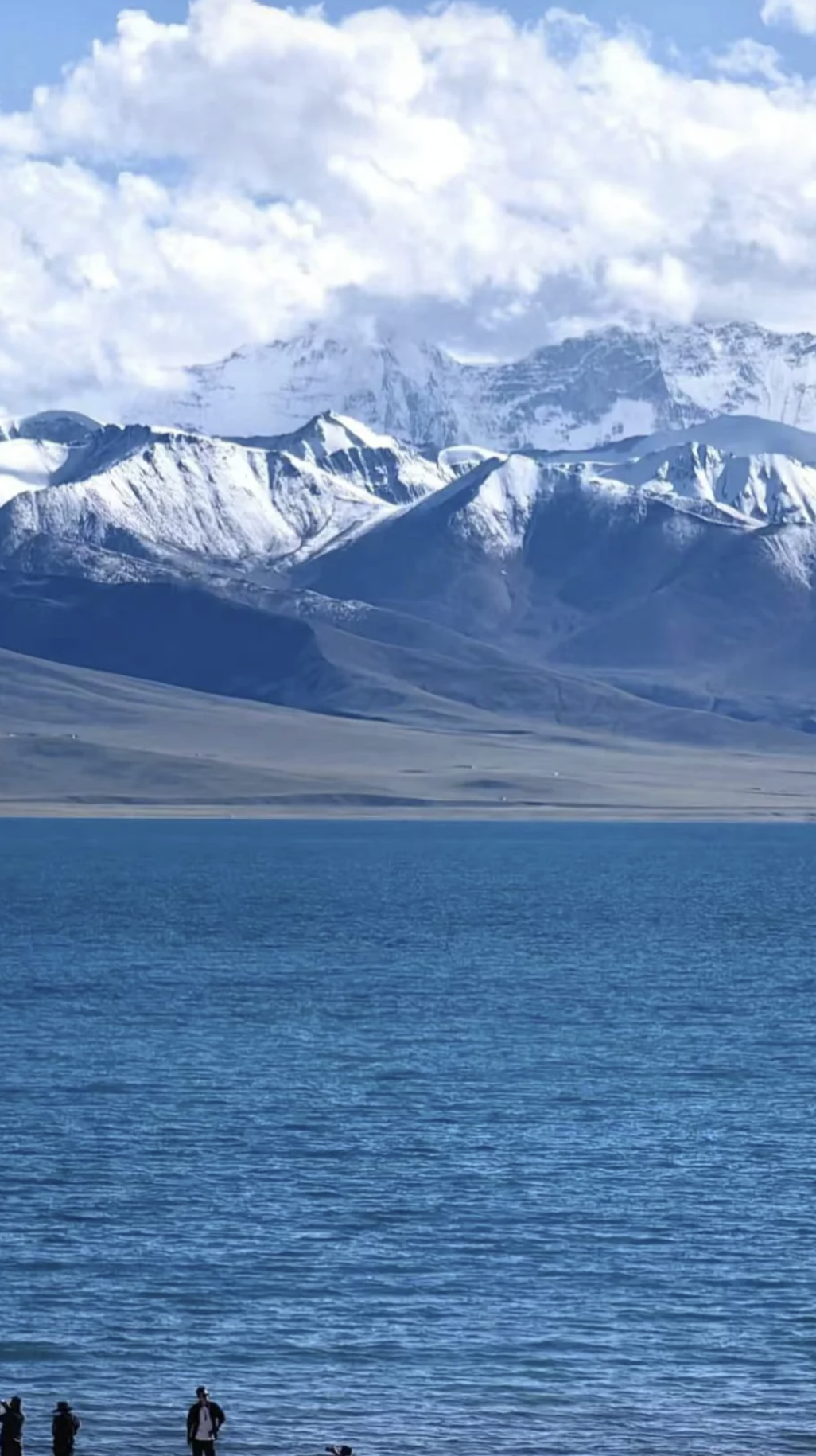
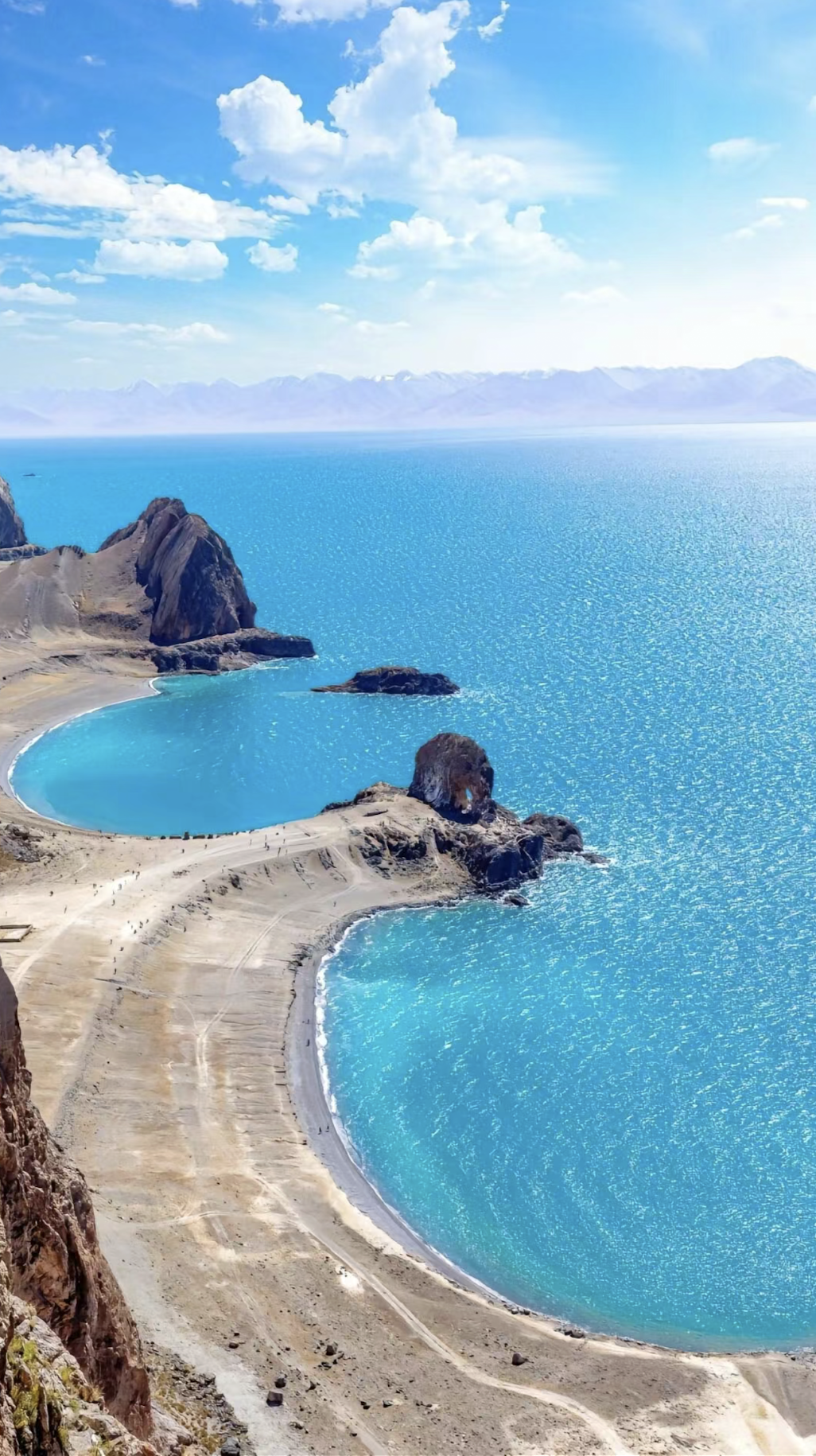
Lhasa-Namtso One-Day Tour
After completing the east and southeast routes, the final major attraction is Namtso Lake in the northern Tibetan region. As the highest saltwater lake in the world, Namtso is a must-see and draws nearly ten thousand visitors daily. The lake, at 4,700 meters above sea level, offers breathtaking views. Many visitors head to Namtso the day after arriving in Lhasa, but it's wise to acclimate first due to the high altitude. The lake is closed from October to May, reopening in early May.
Main Attractions:
- Nyenchen Tanglha Mountains
- Holy Gate
- Prayer Stones
Tour options include one-day and two-day excursions from Lhasa. One-day tours are rushed but allow for a brief visit. Two-day tours offer the chance to see both the sunrise and sunset at Namtso, providing a richer experience. Due to high altitude and cold temperatures at night, prepare for altitude sickness and cold weather. Two-day tours include transportation and entrance fees (120 RMB per person), with accommodation and meals at your own expense. Basic lodging on Zaxi Peninsula costs 35-50 RMB per bed, with meals primarily Tibetan-style, such as noodles for around 20 RMB.
💡 Tips
- Be aware of charges for photographing yaks and Tibetan mastiffs; avoid taking their photos without payment.
- The lake holds sacred significance for Tibetans, so avoid touching the water or collecting stones.
Important Transportation Tips for Tibet Travel
Finally, here's a summary of transportation options for Tibet travel:
- Self-Drive/Ride: This offers freedom but requires careful navigation and driving skills due to challenging road conditions.
- Hitchhiking: Risky and not recommended, especially for solo travelers.
- Local Buses: Limited routes and infrequent service may not reach all destinations.
- Private Car: More expensive but offers flexibility and comfort.
- Shared Car/Tour Groups: Economical and reliable, with many travel agencies in Lhasa offering shared tours. Booking online in advance often results in better prices and service.
